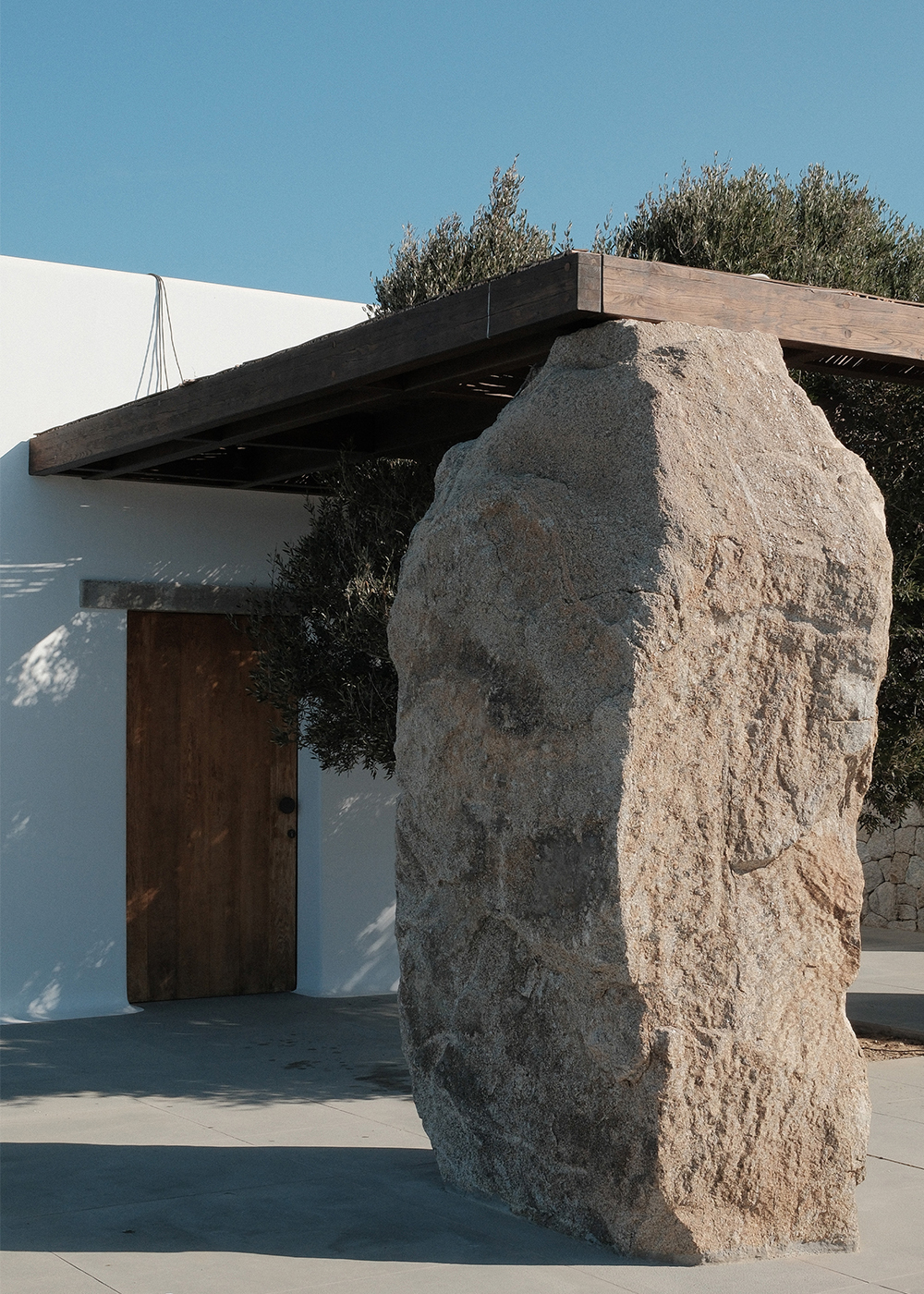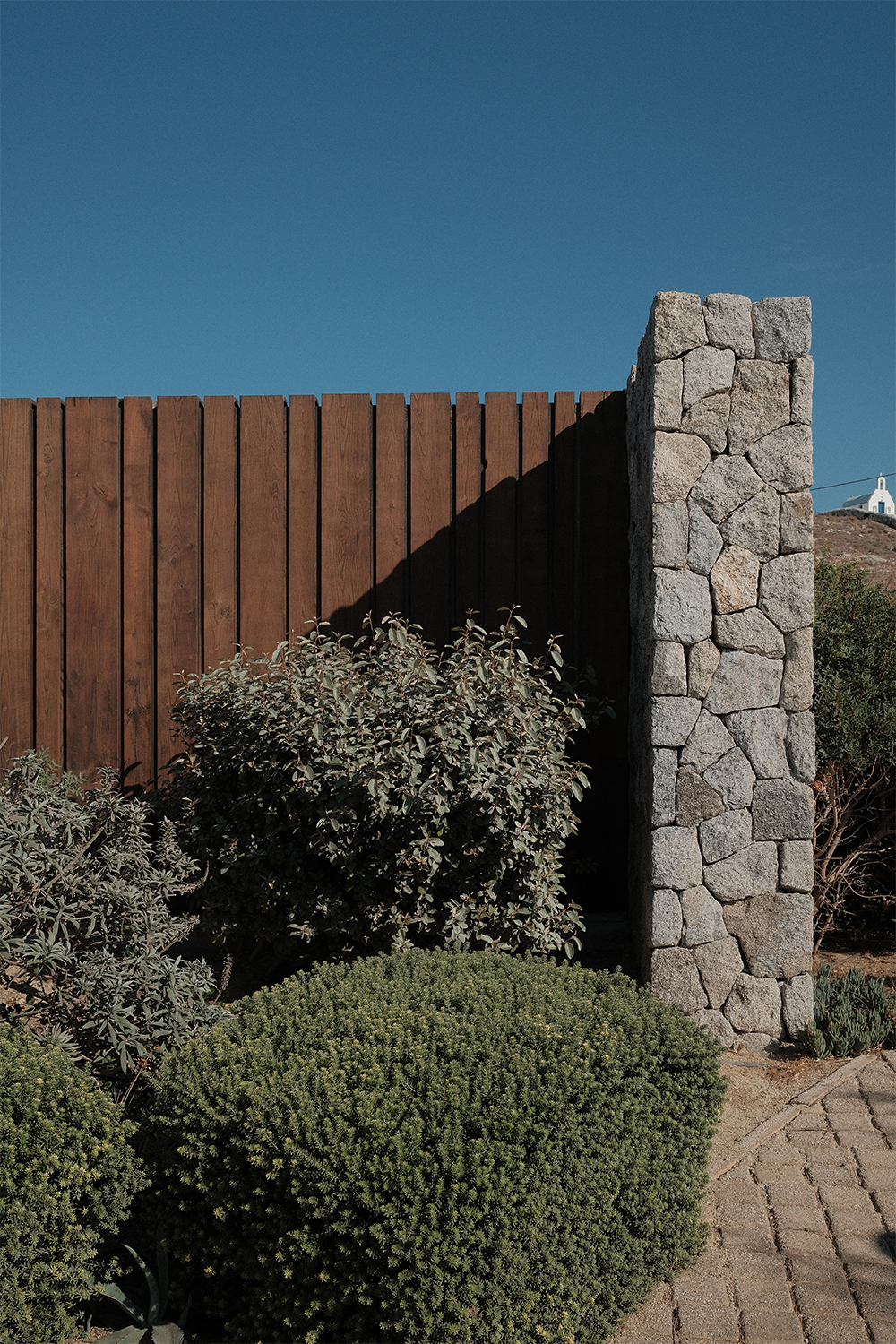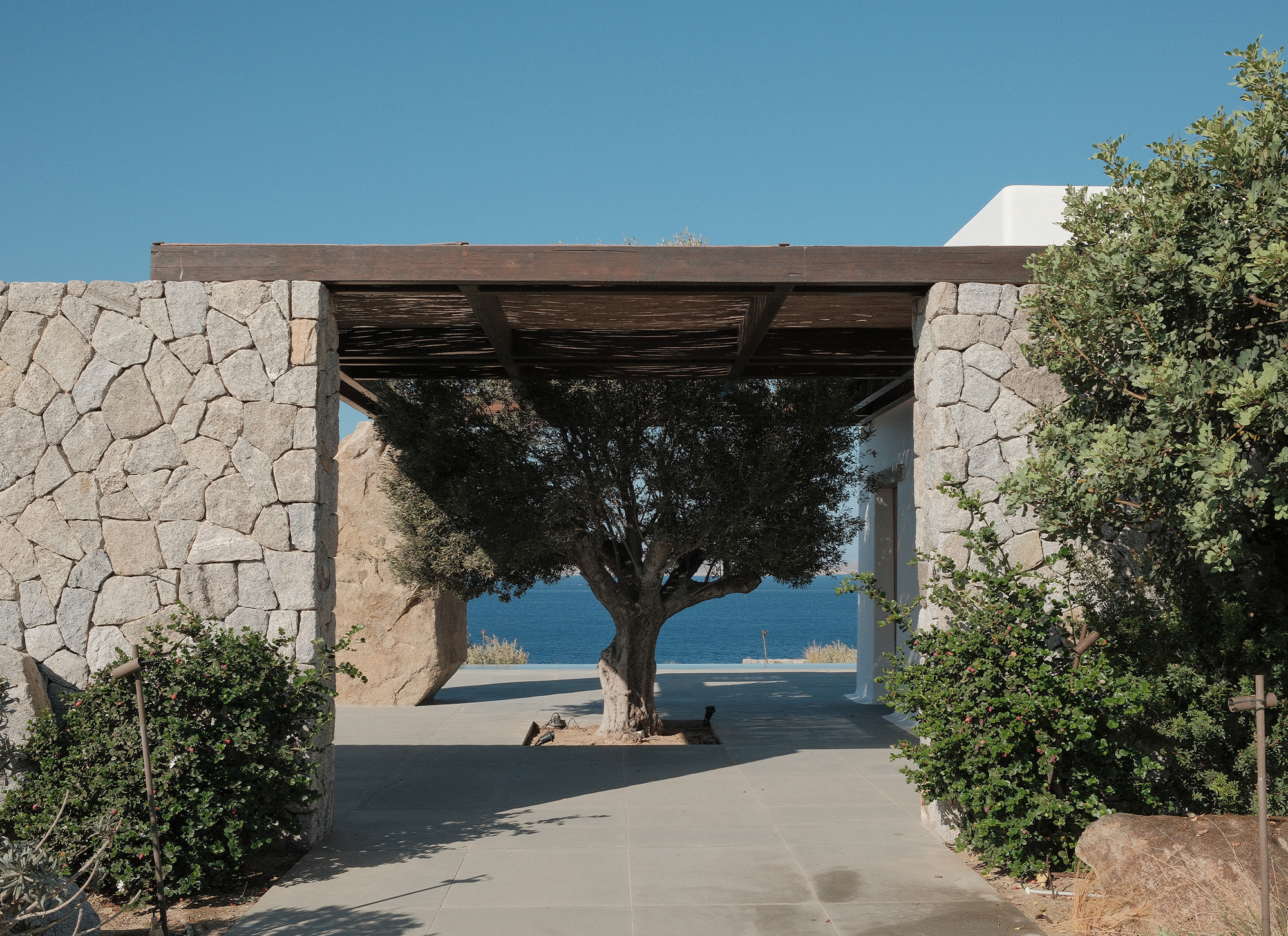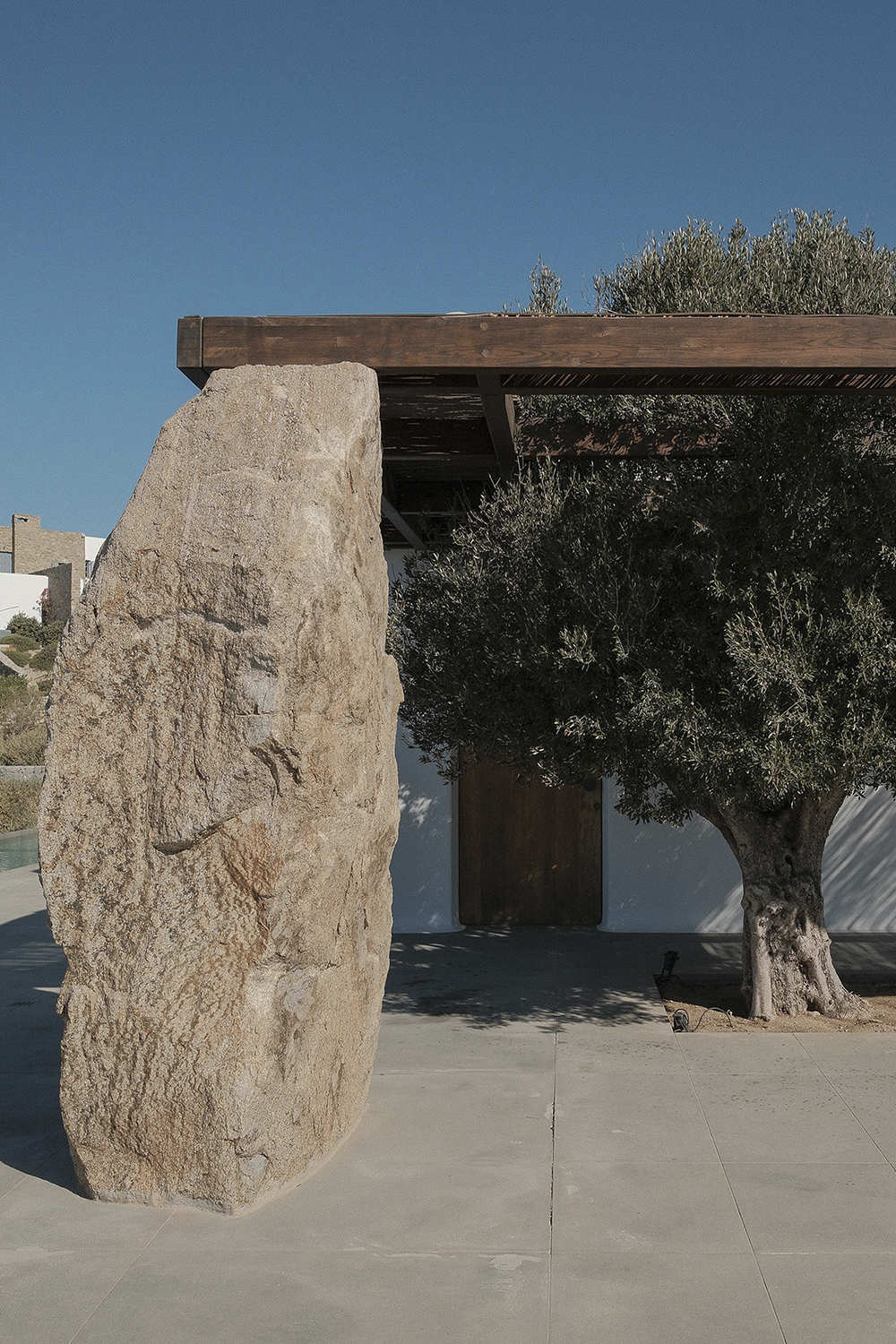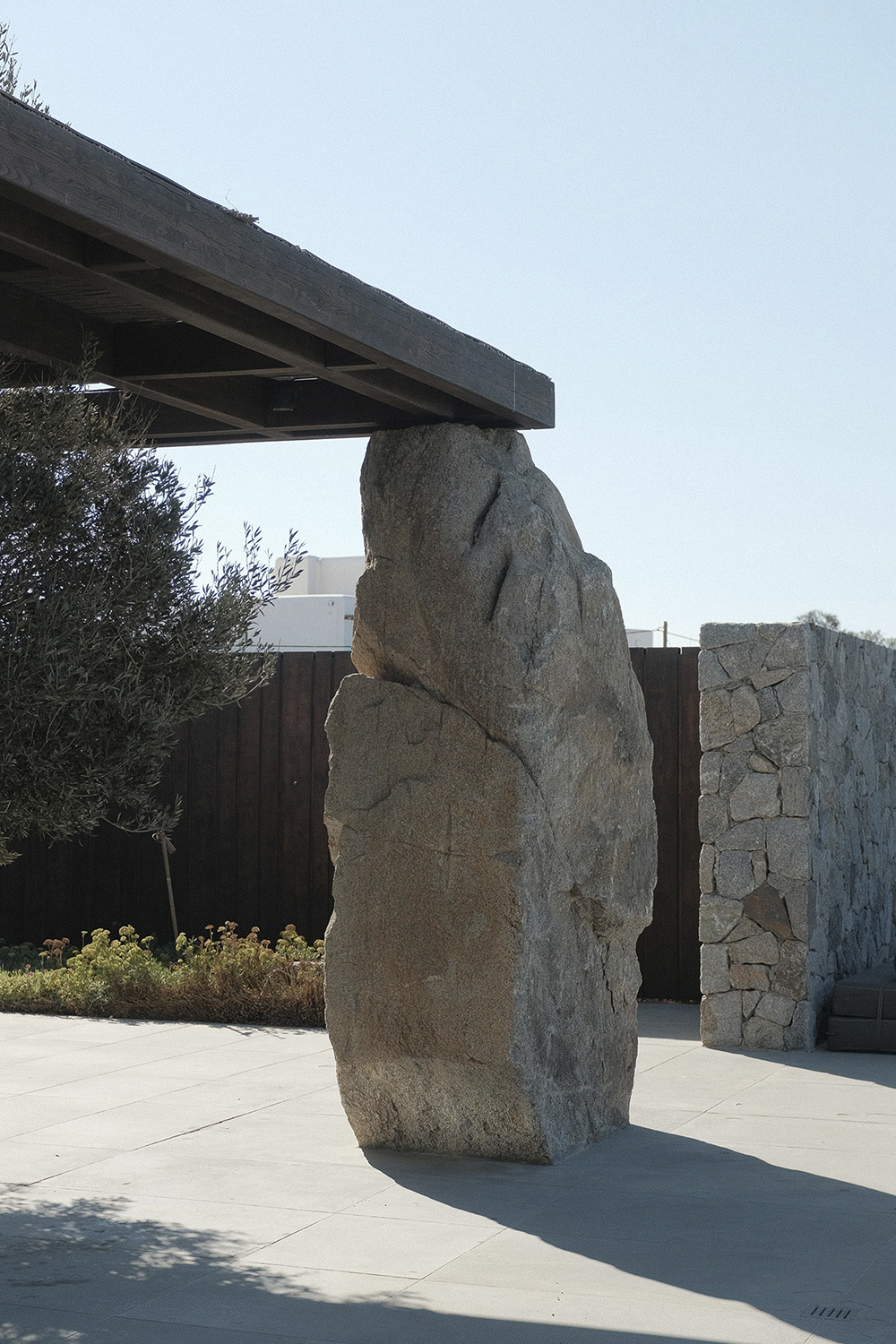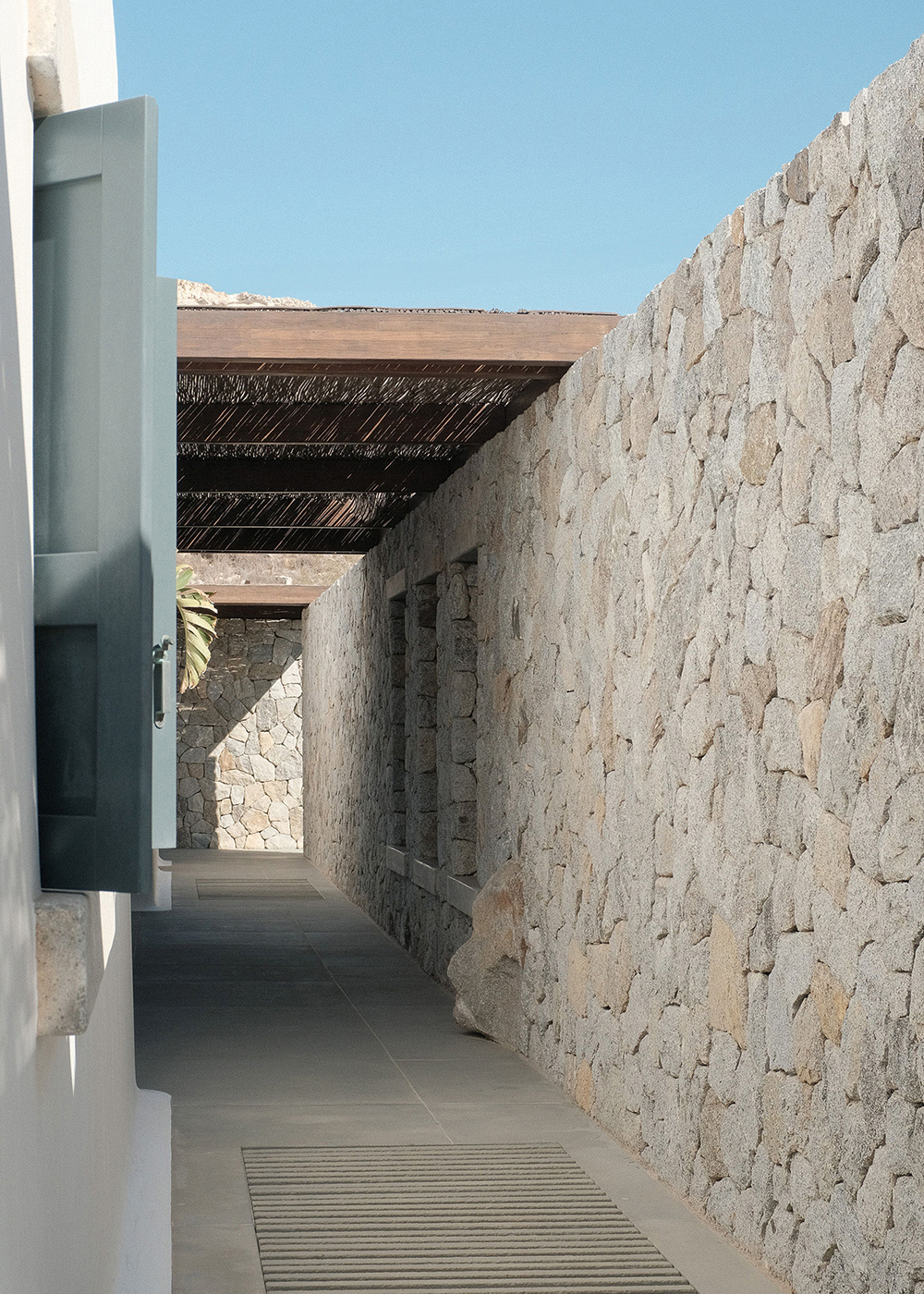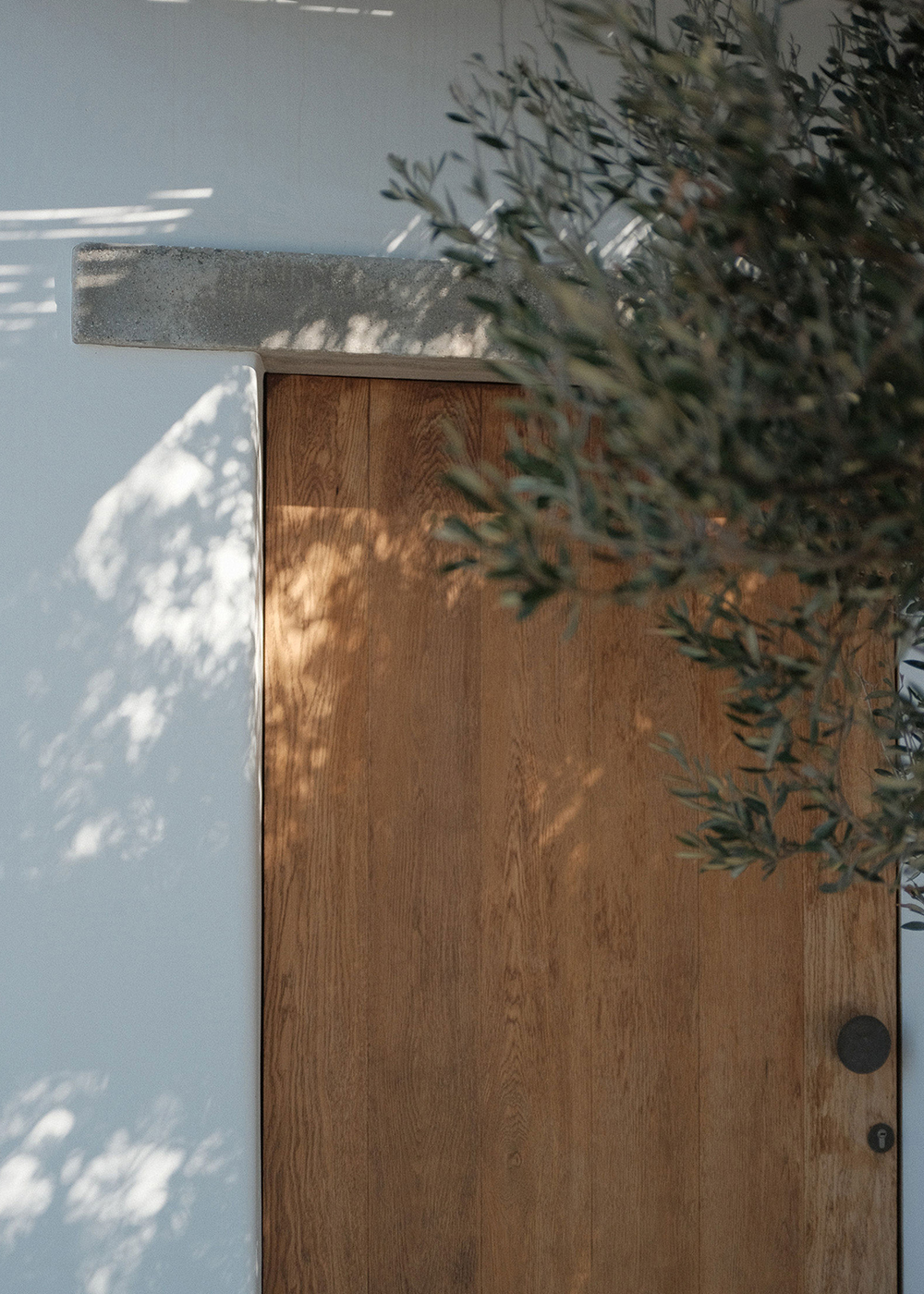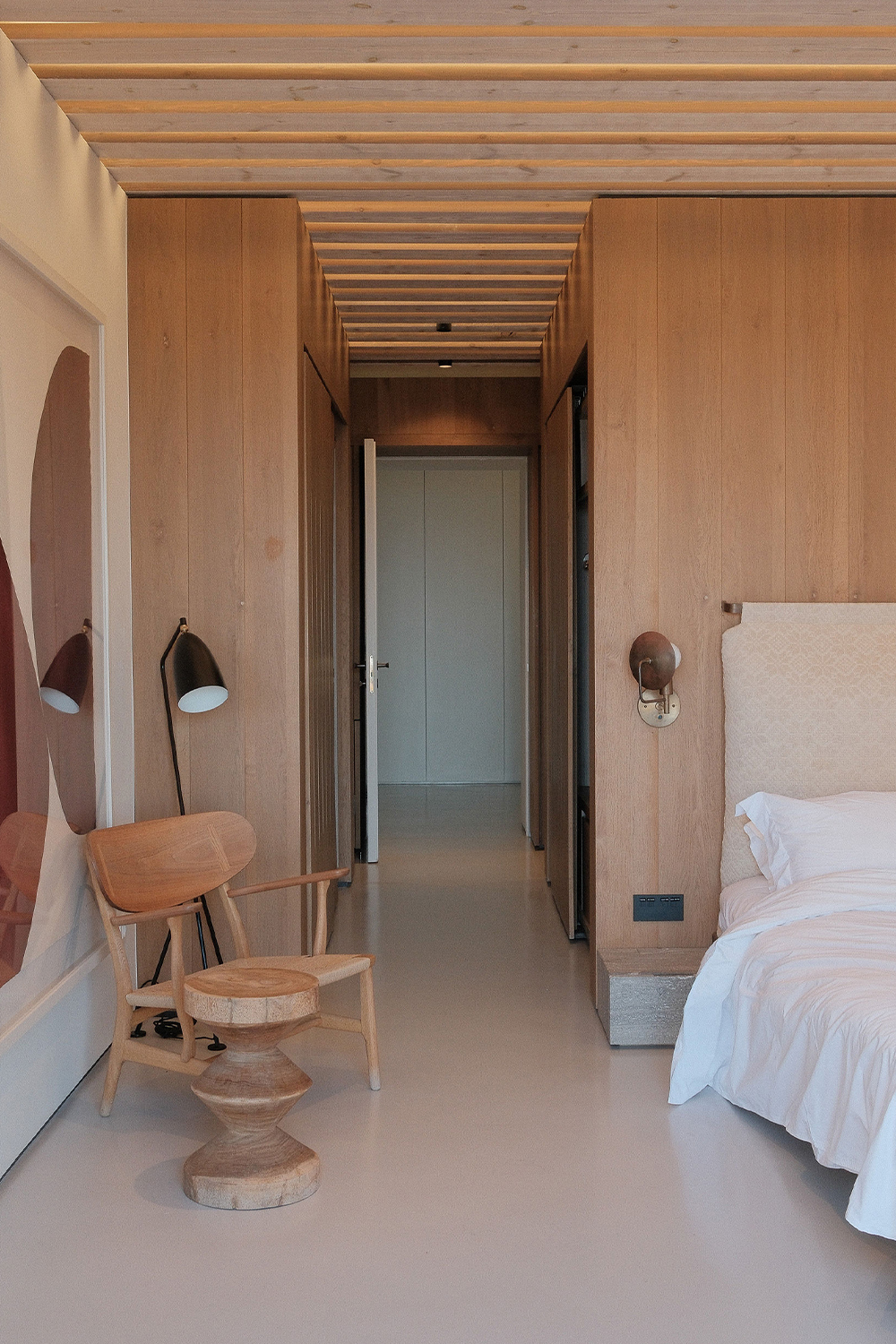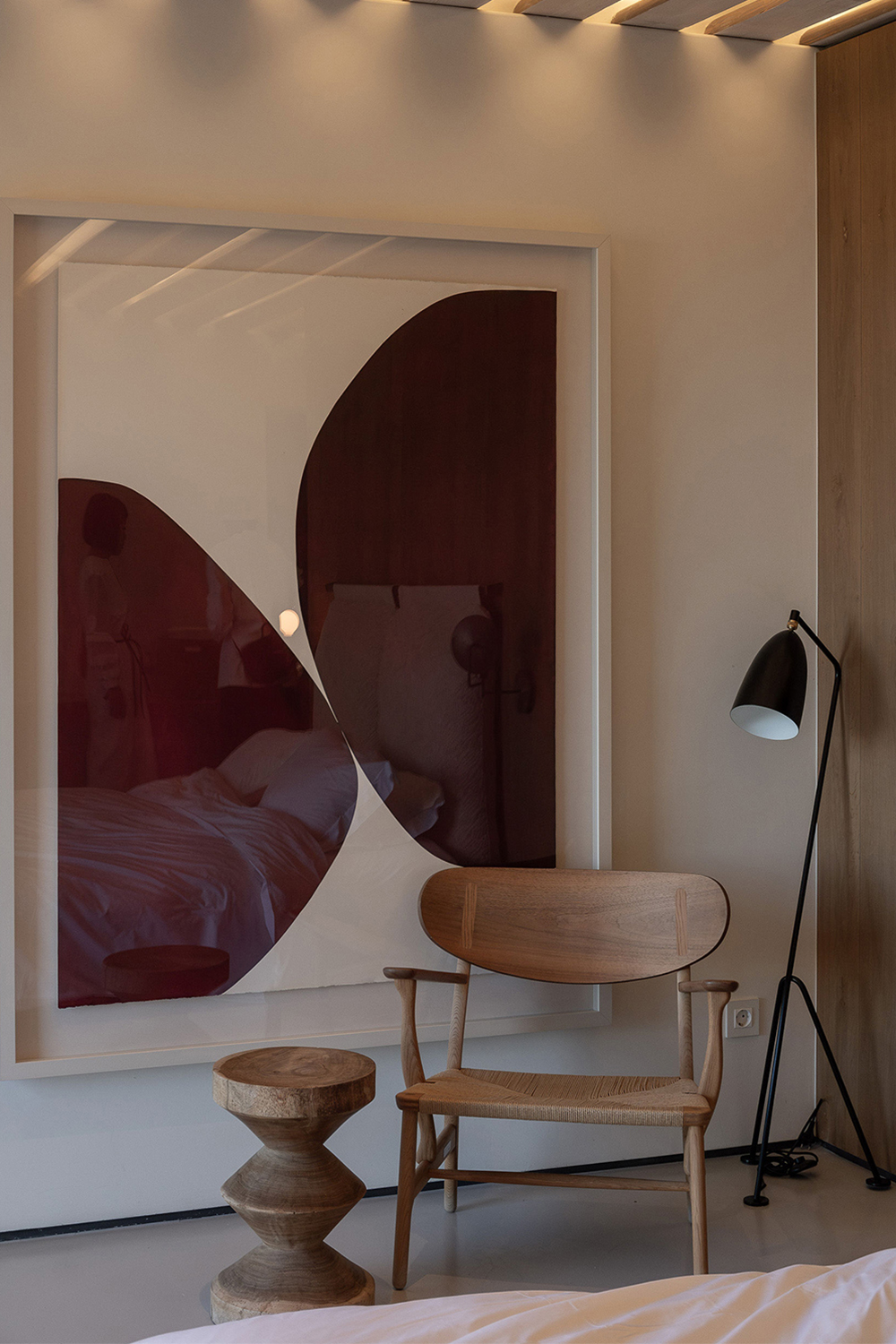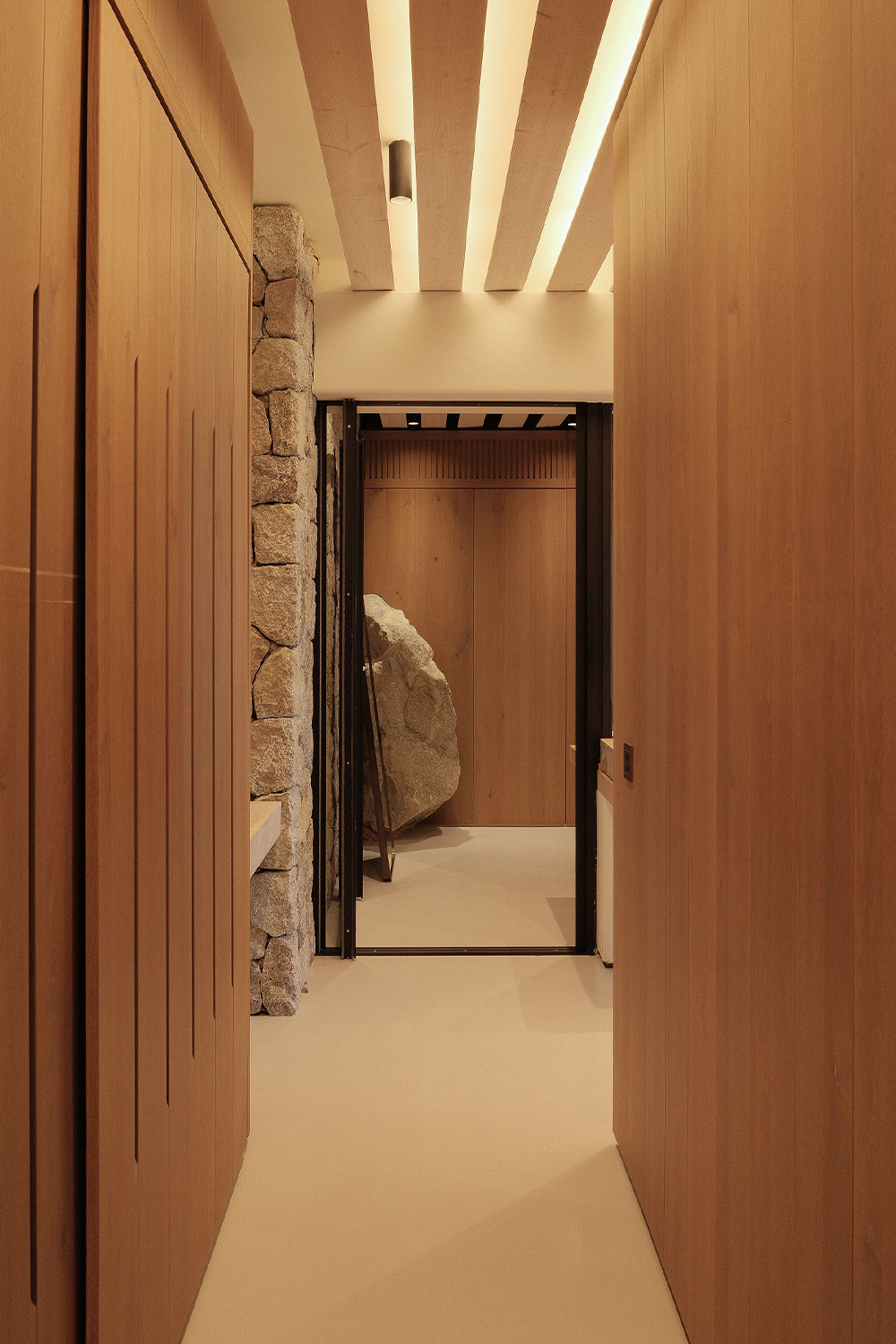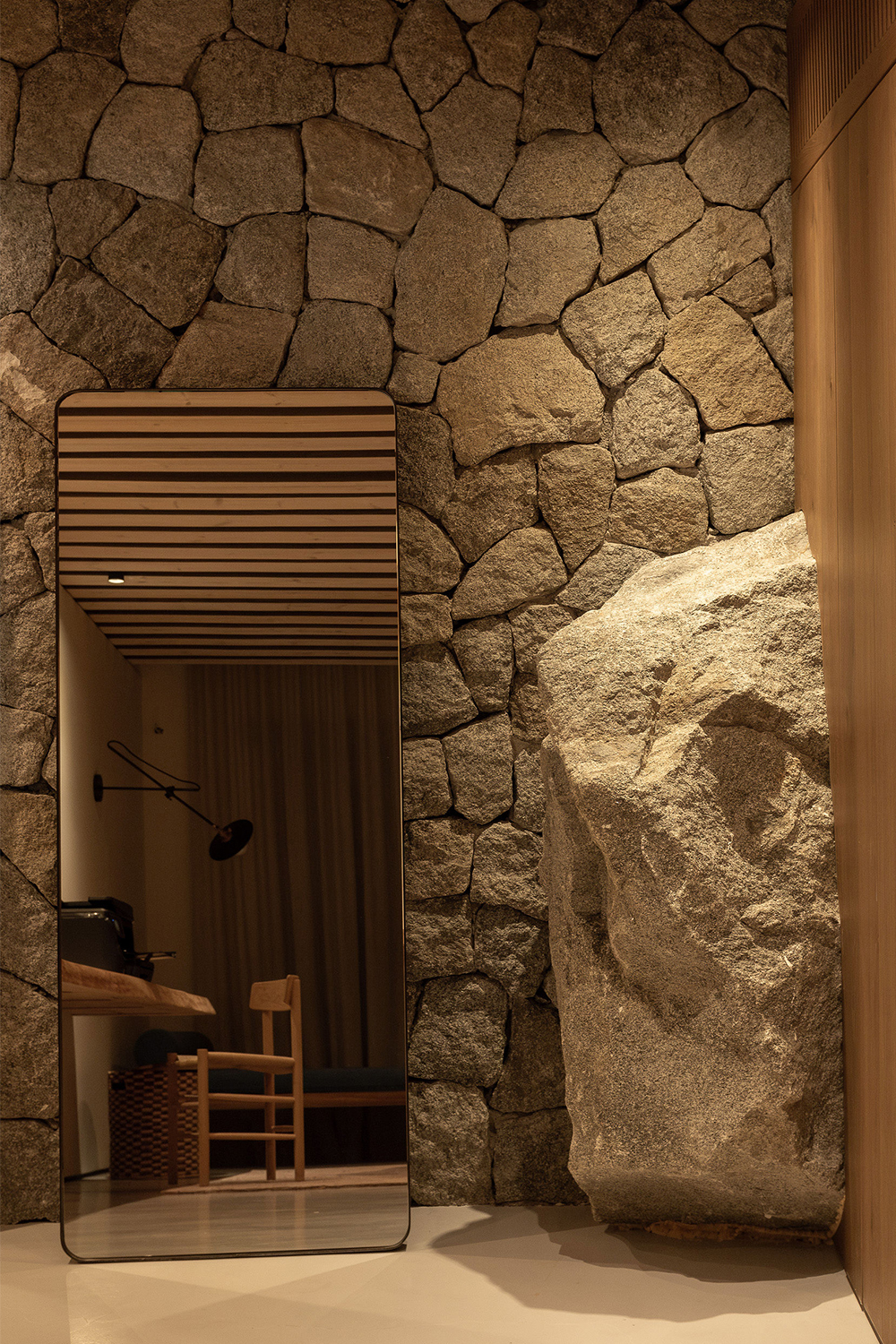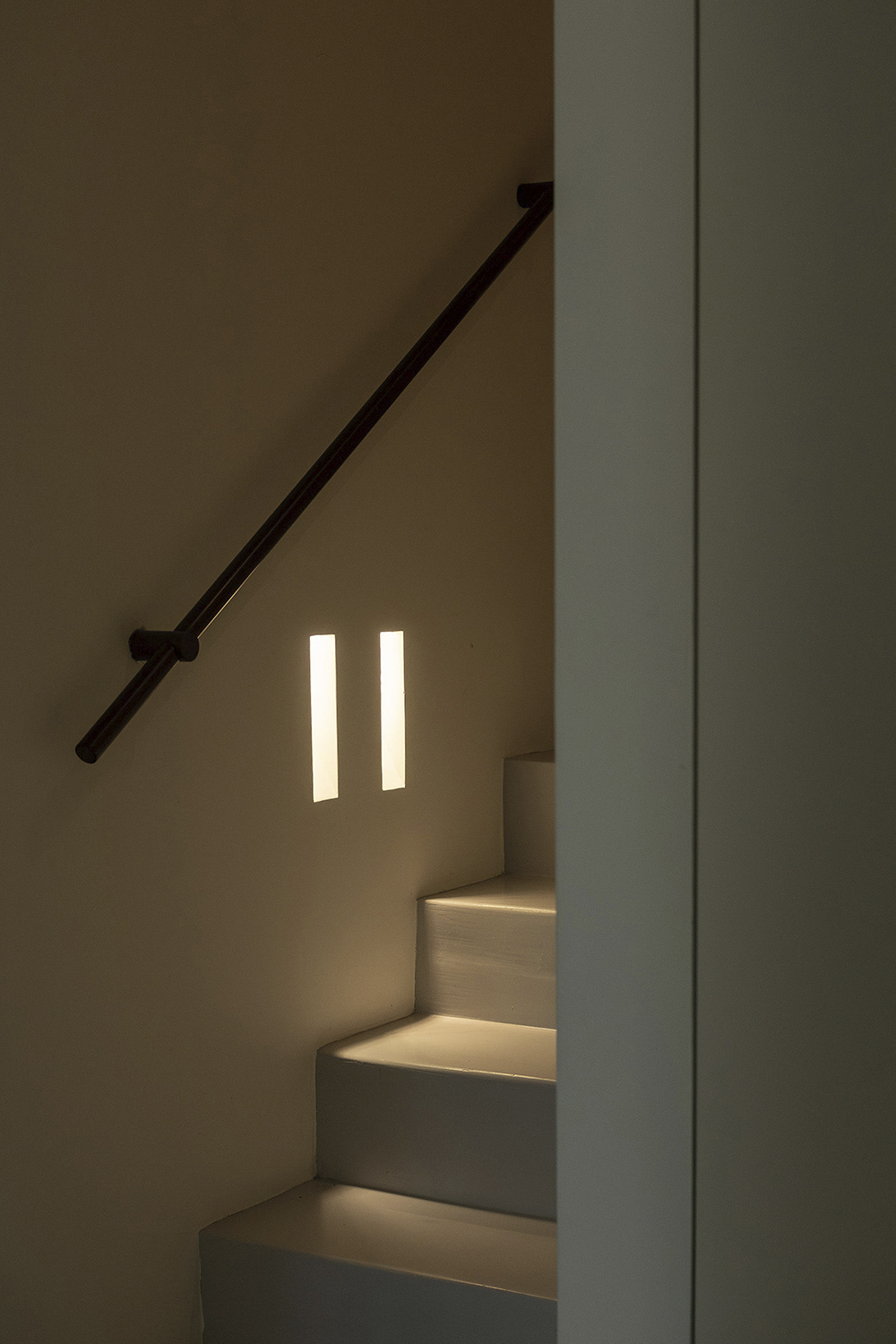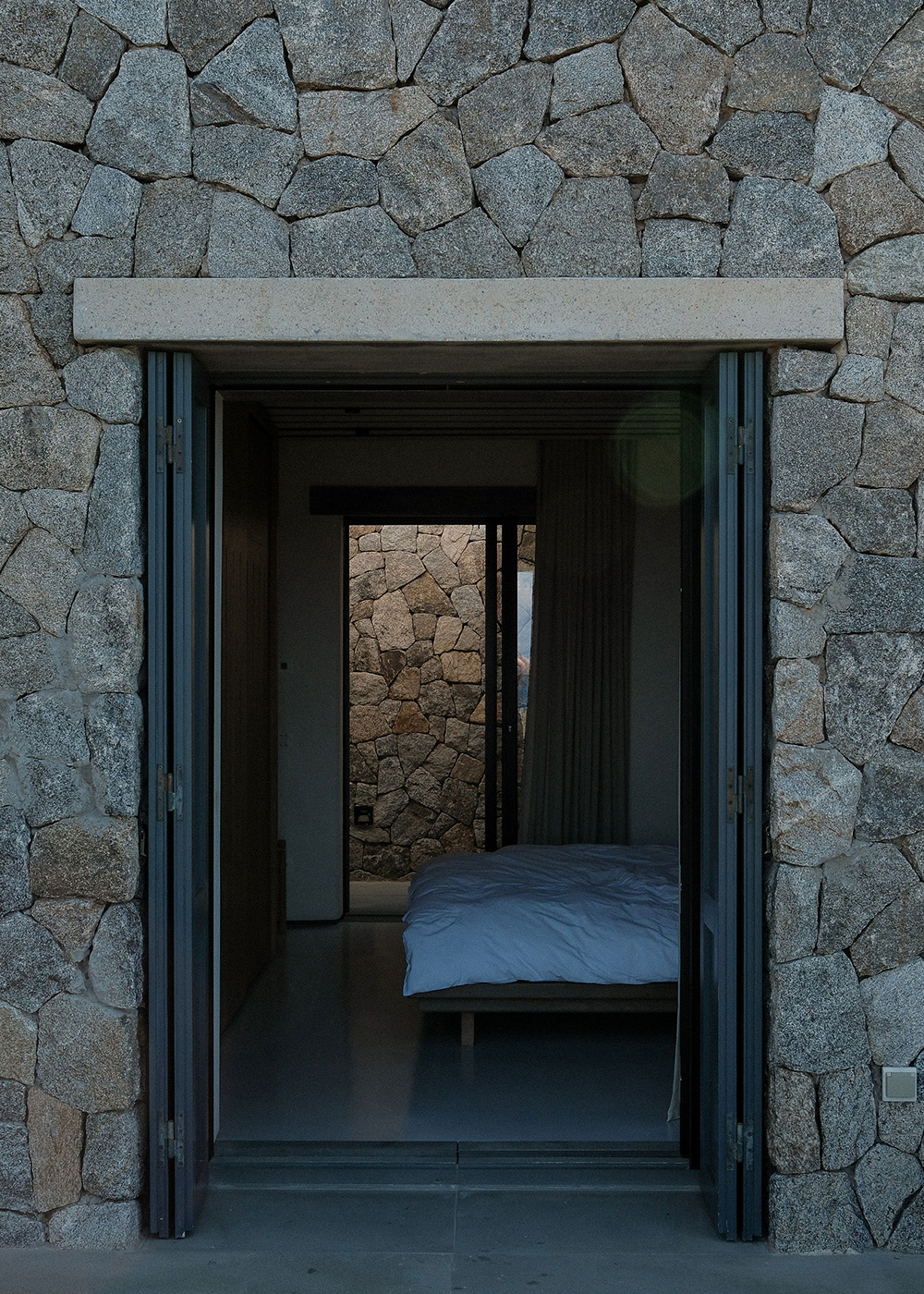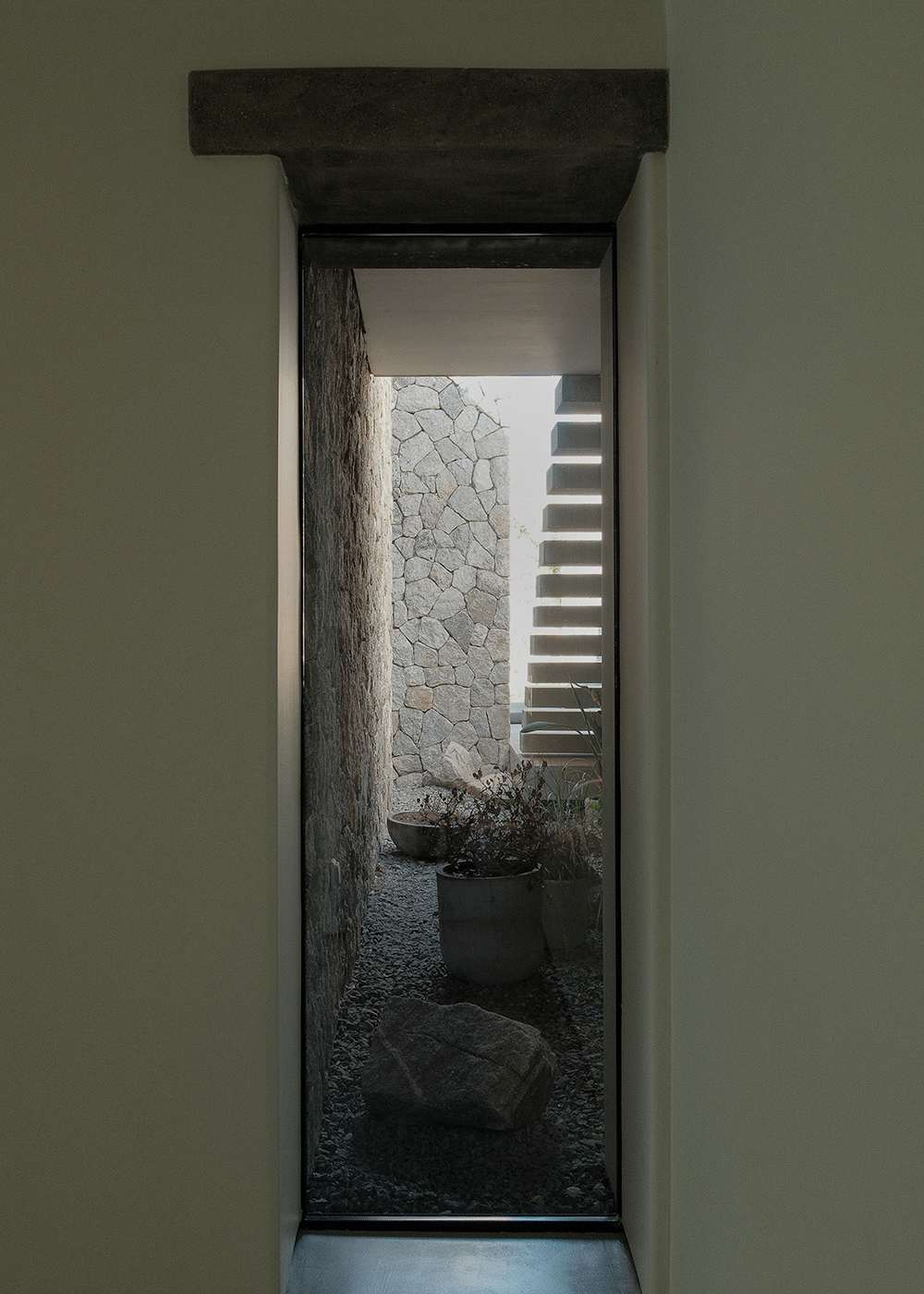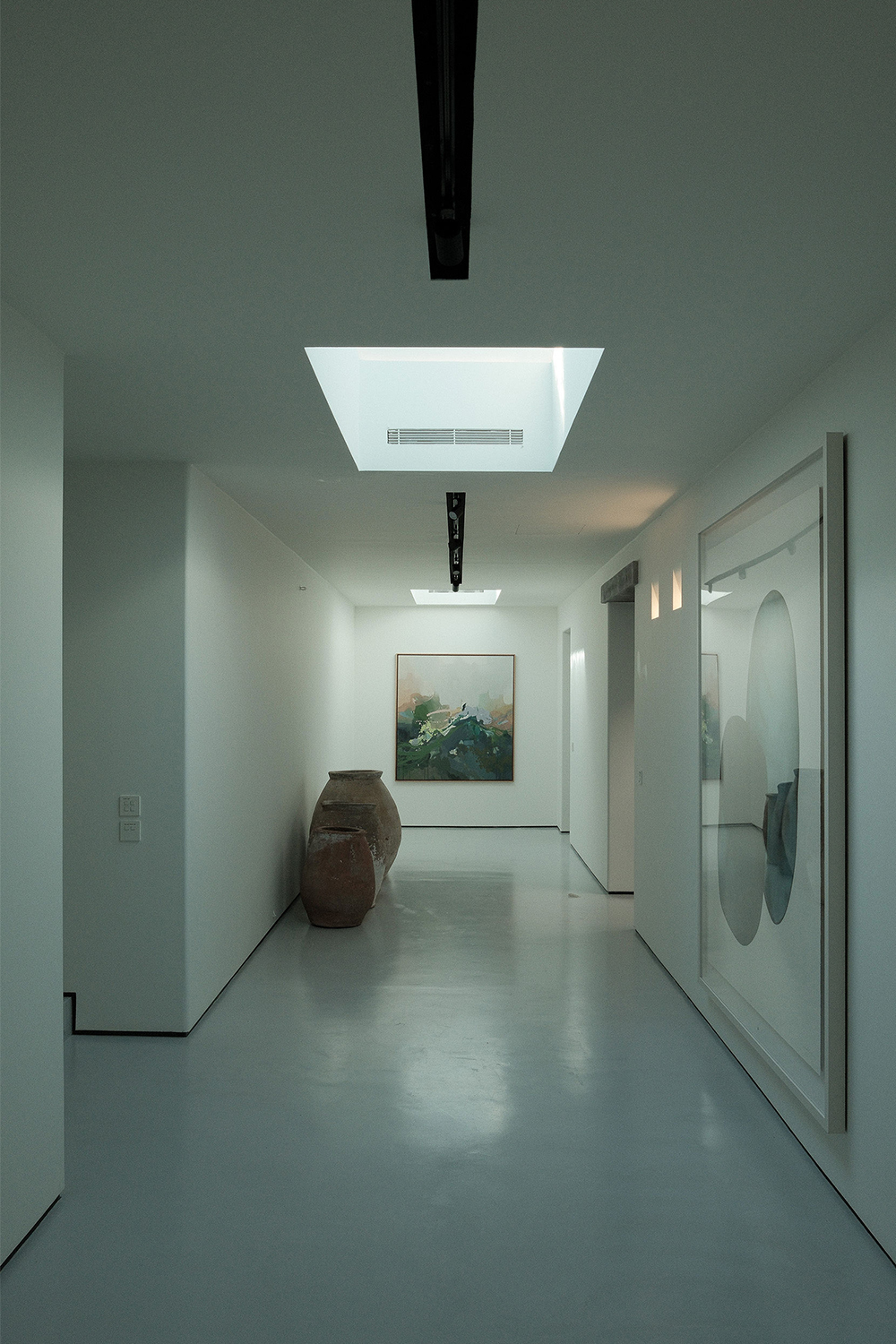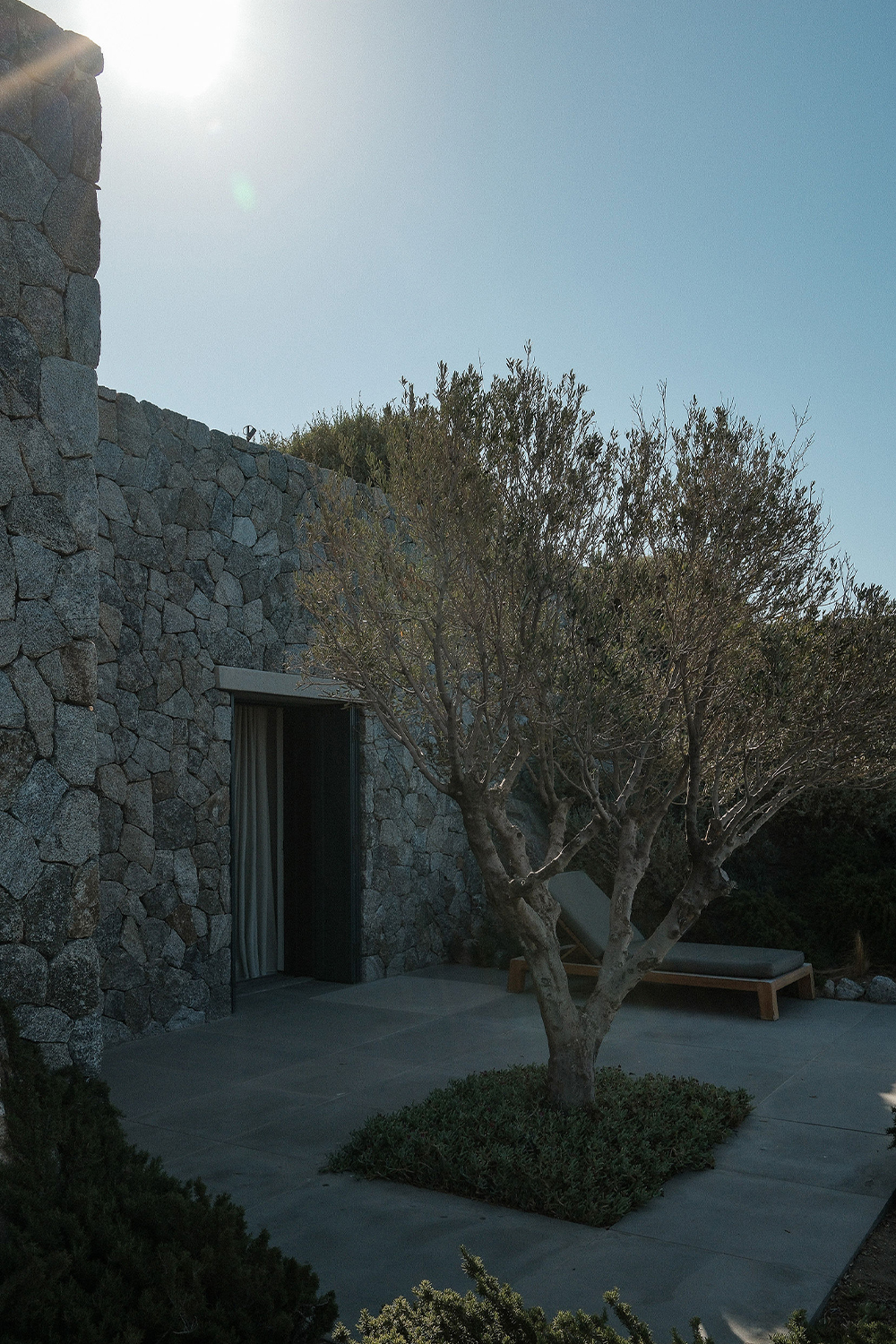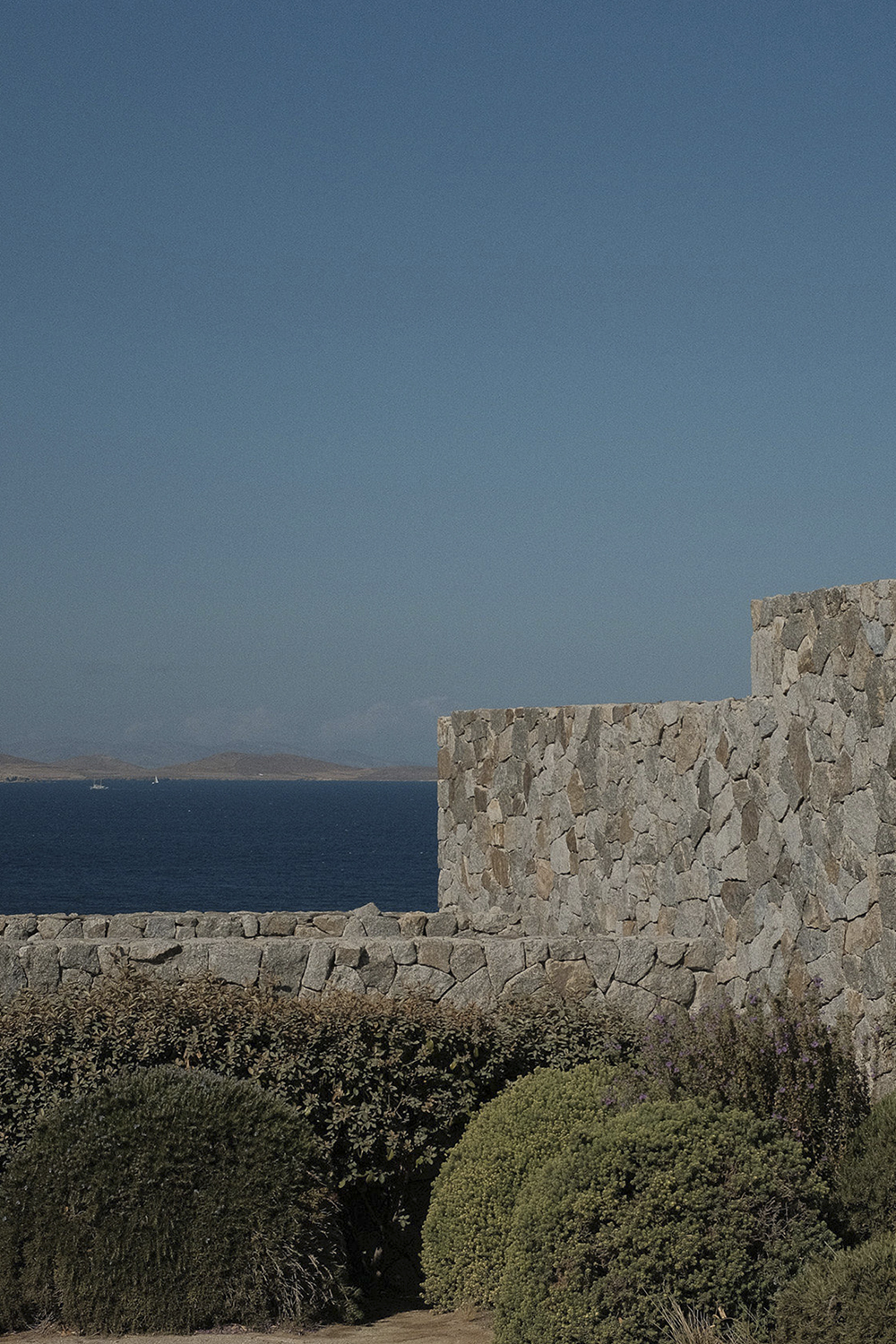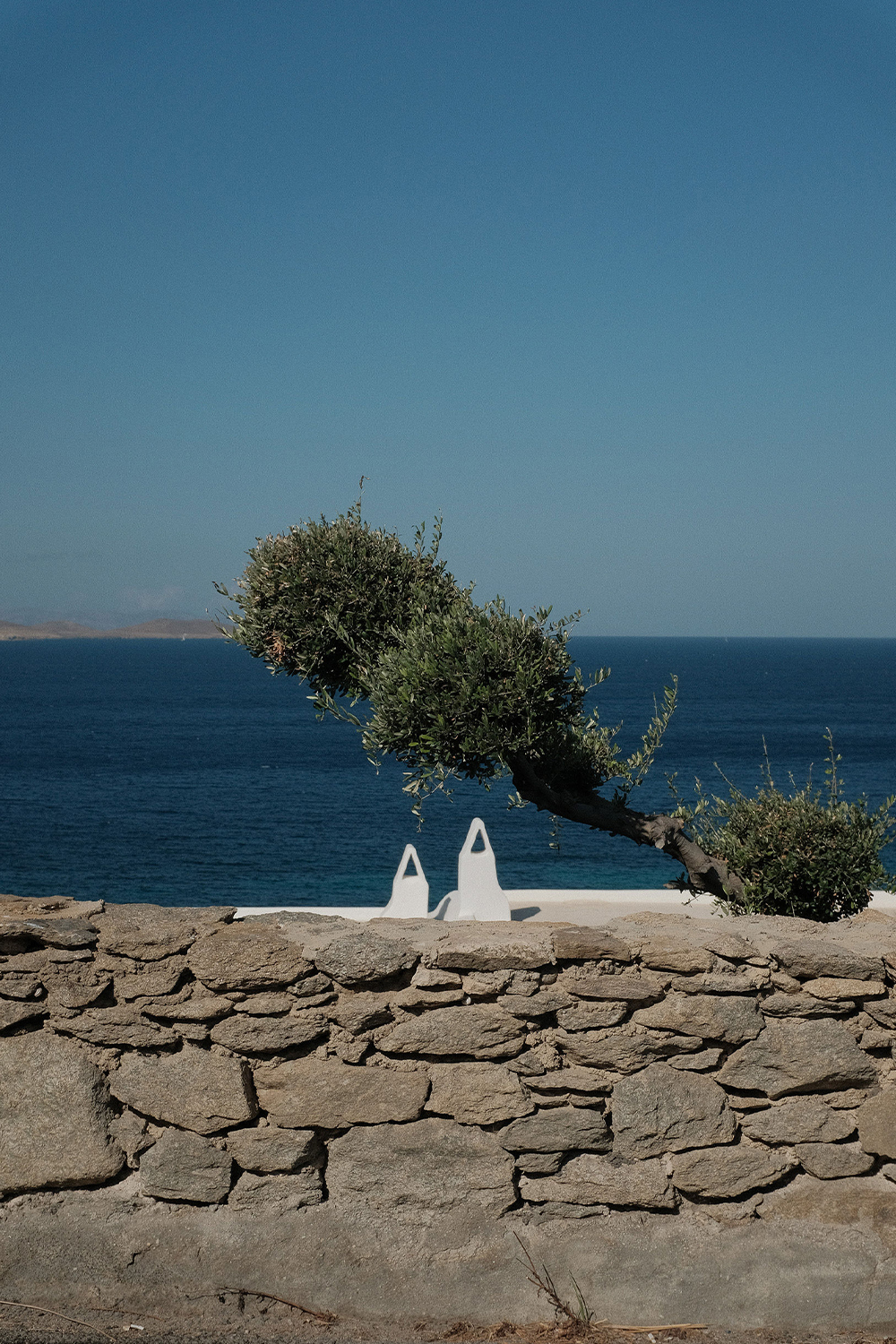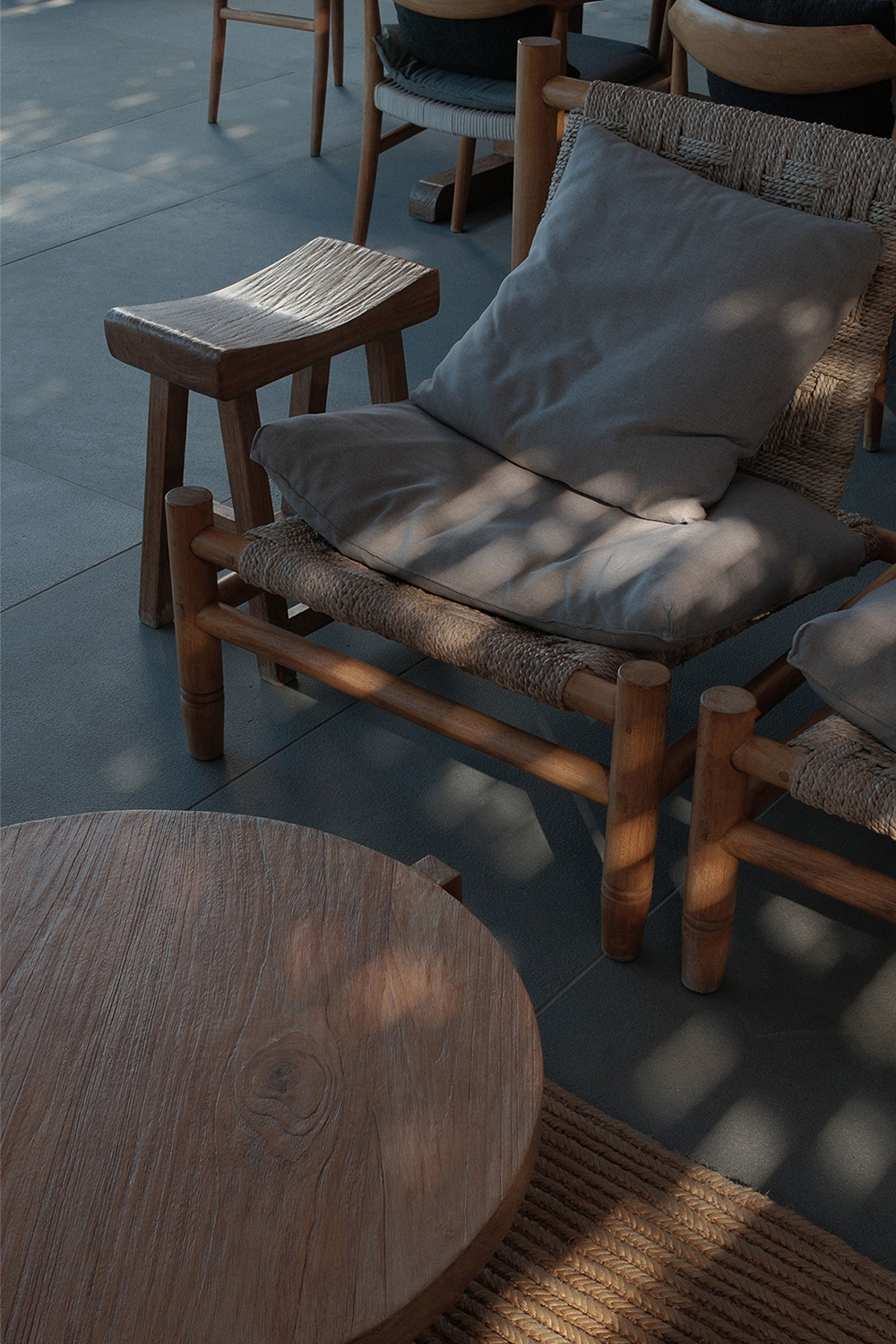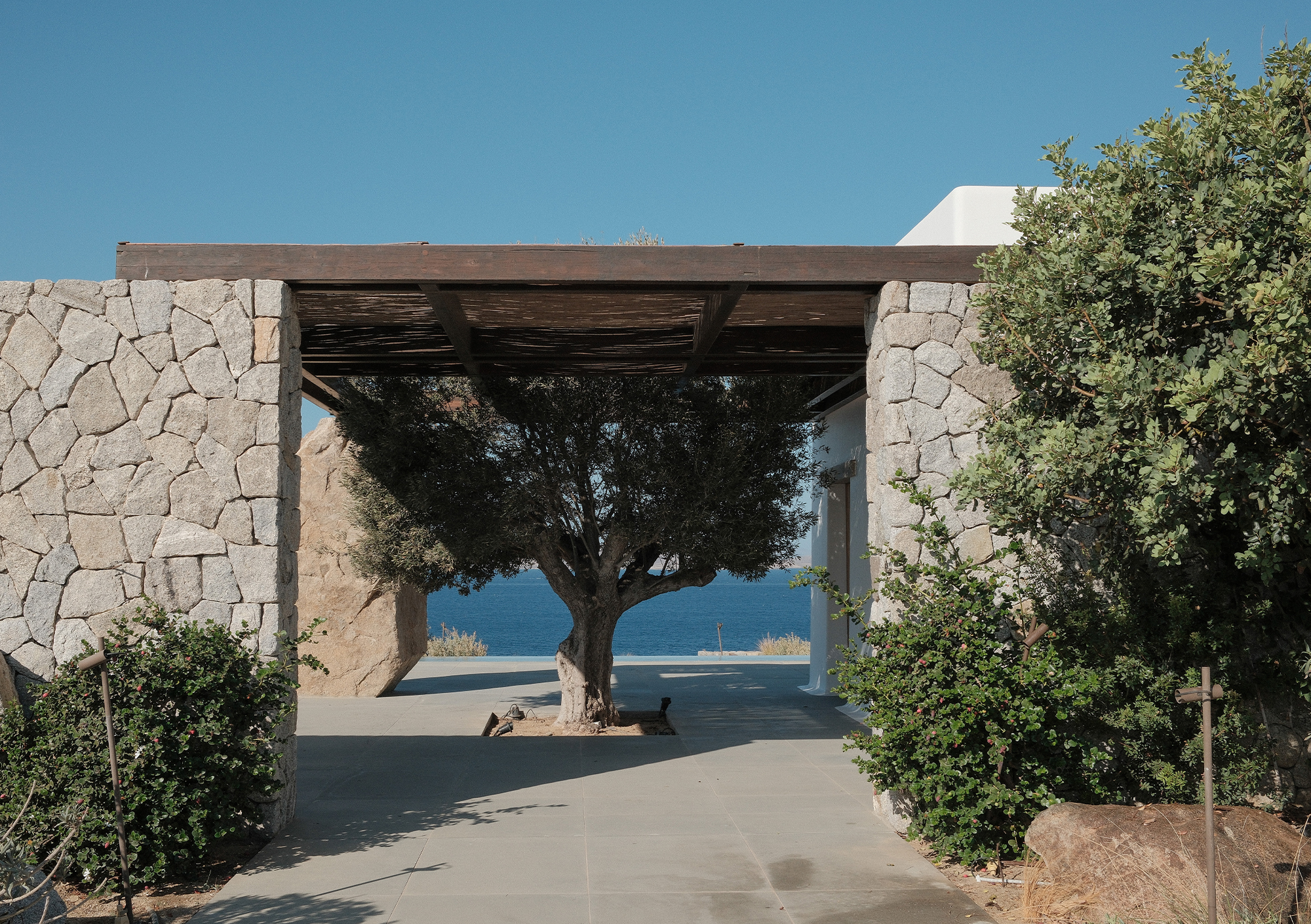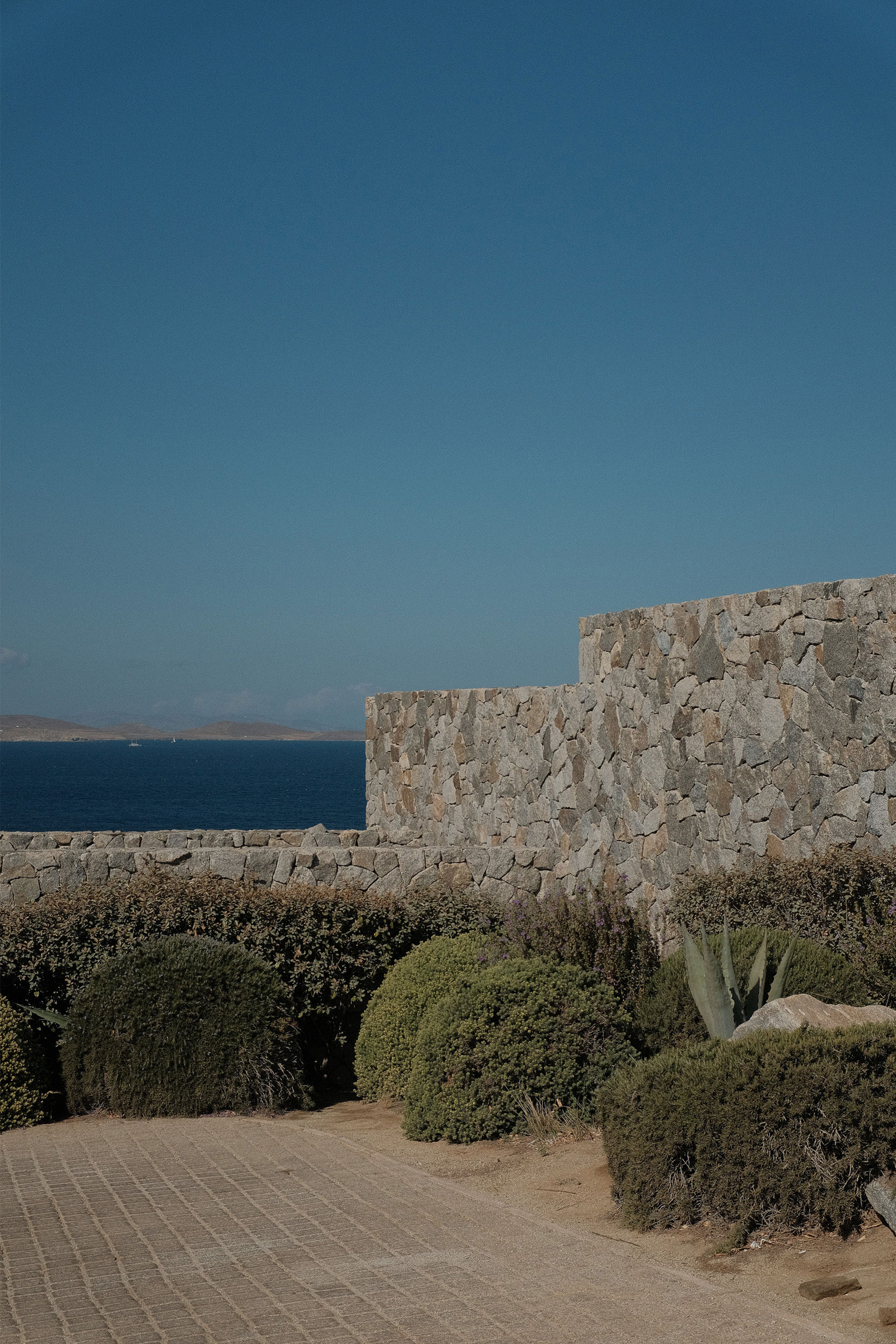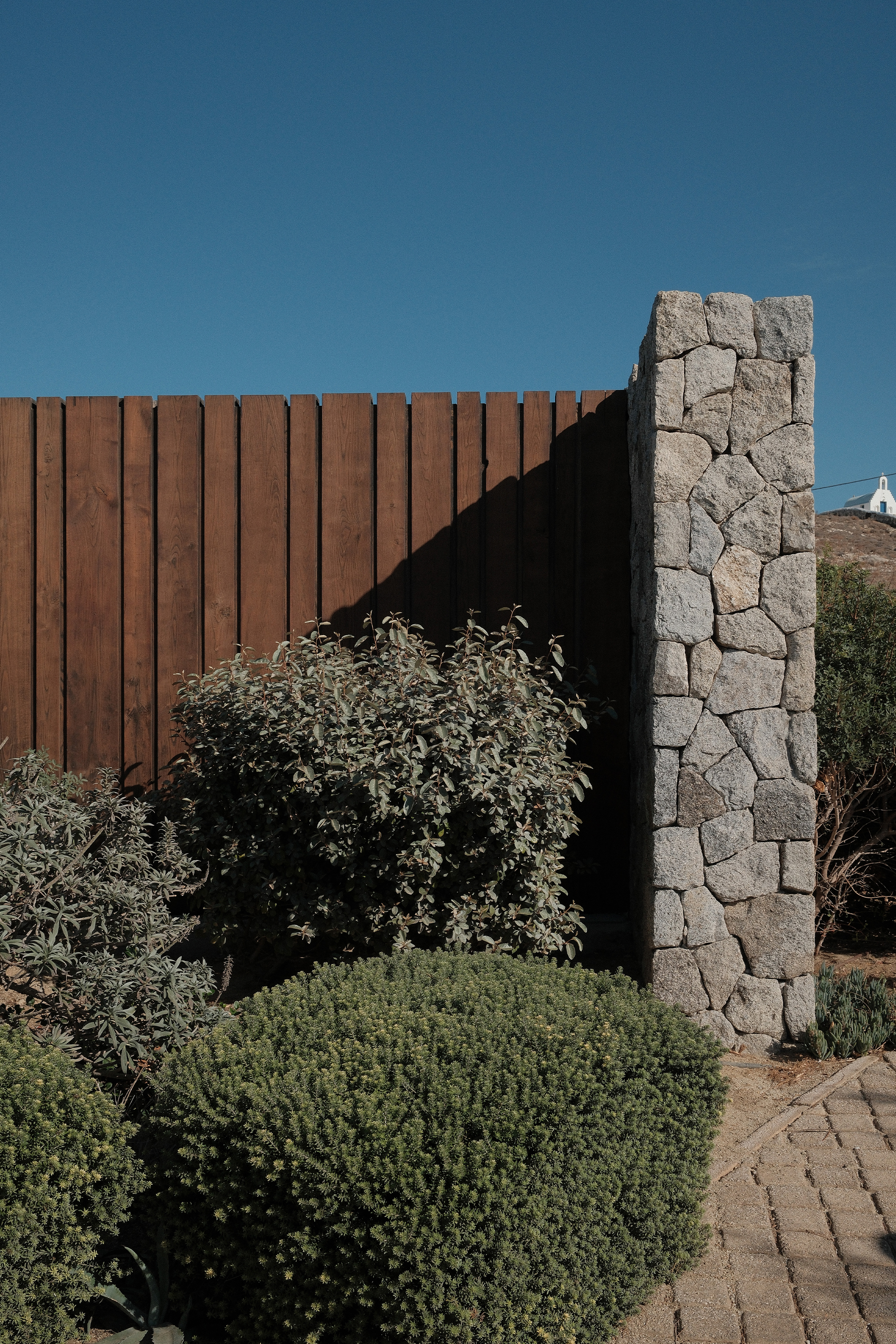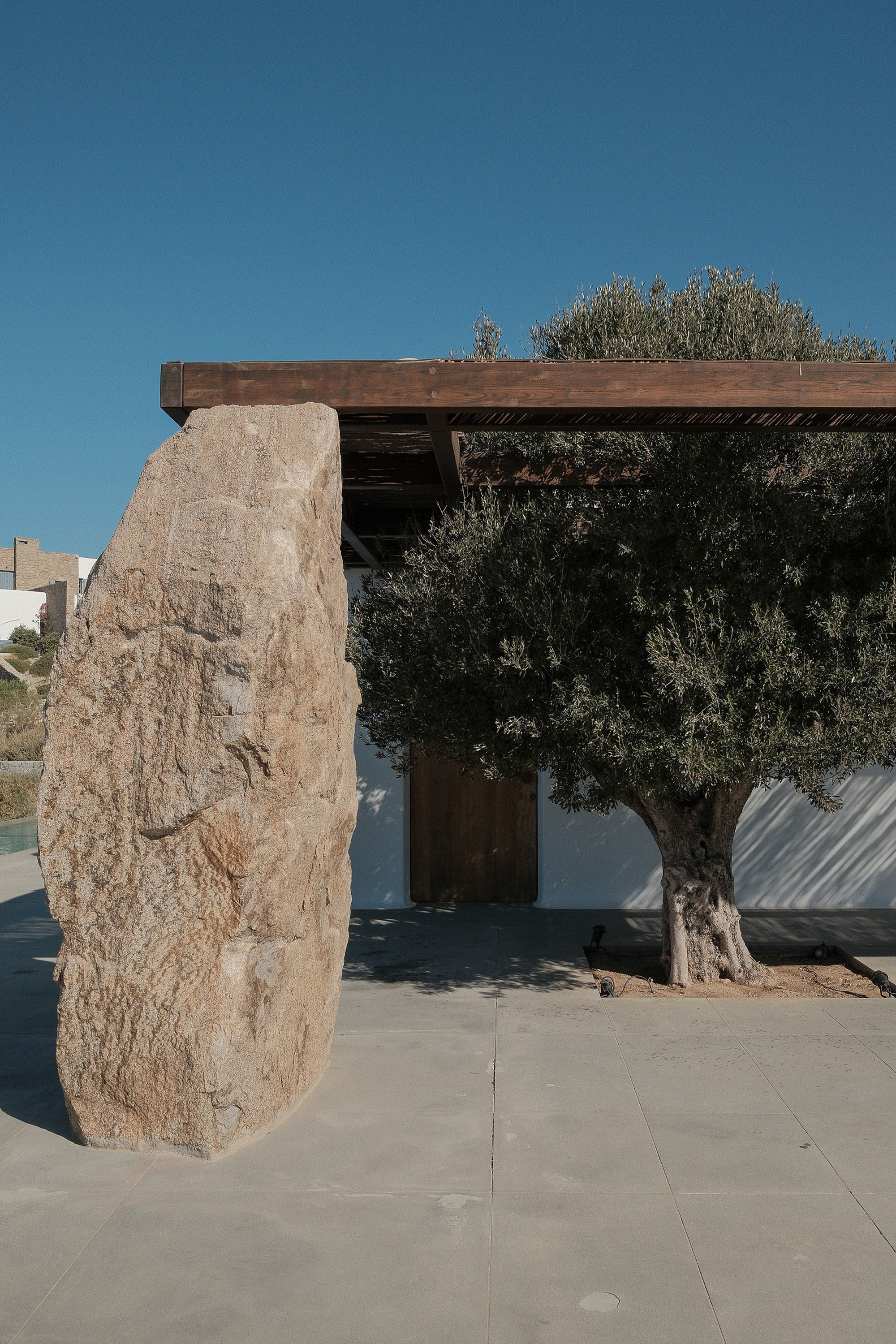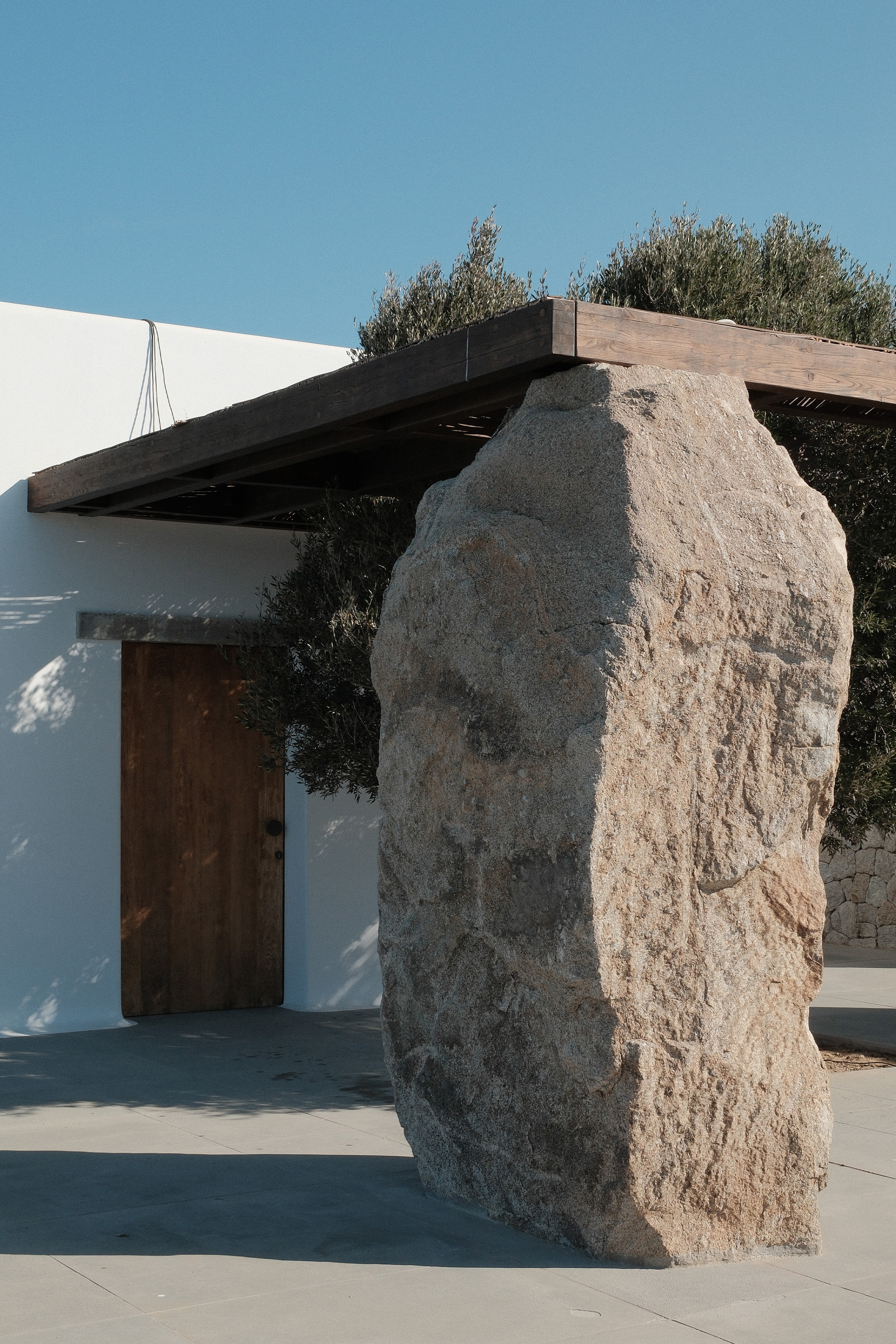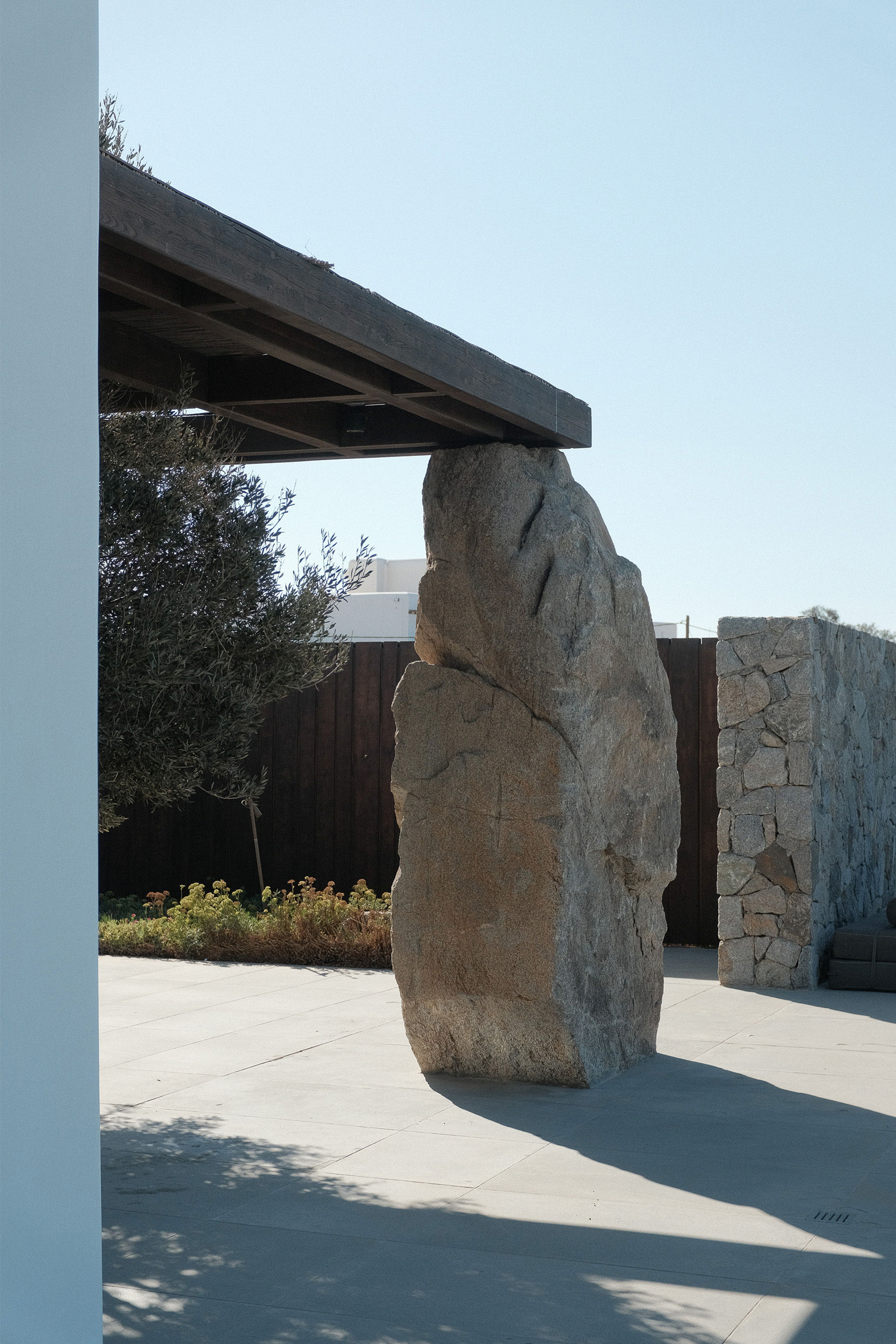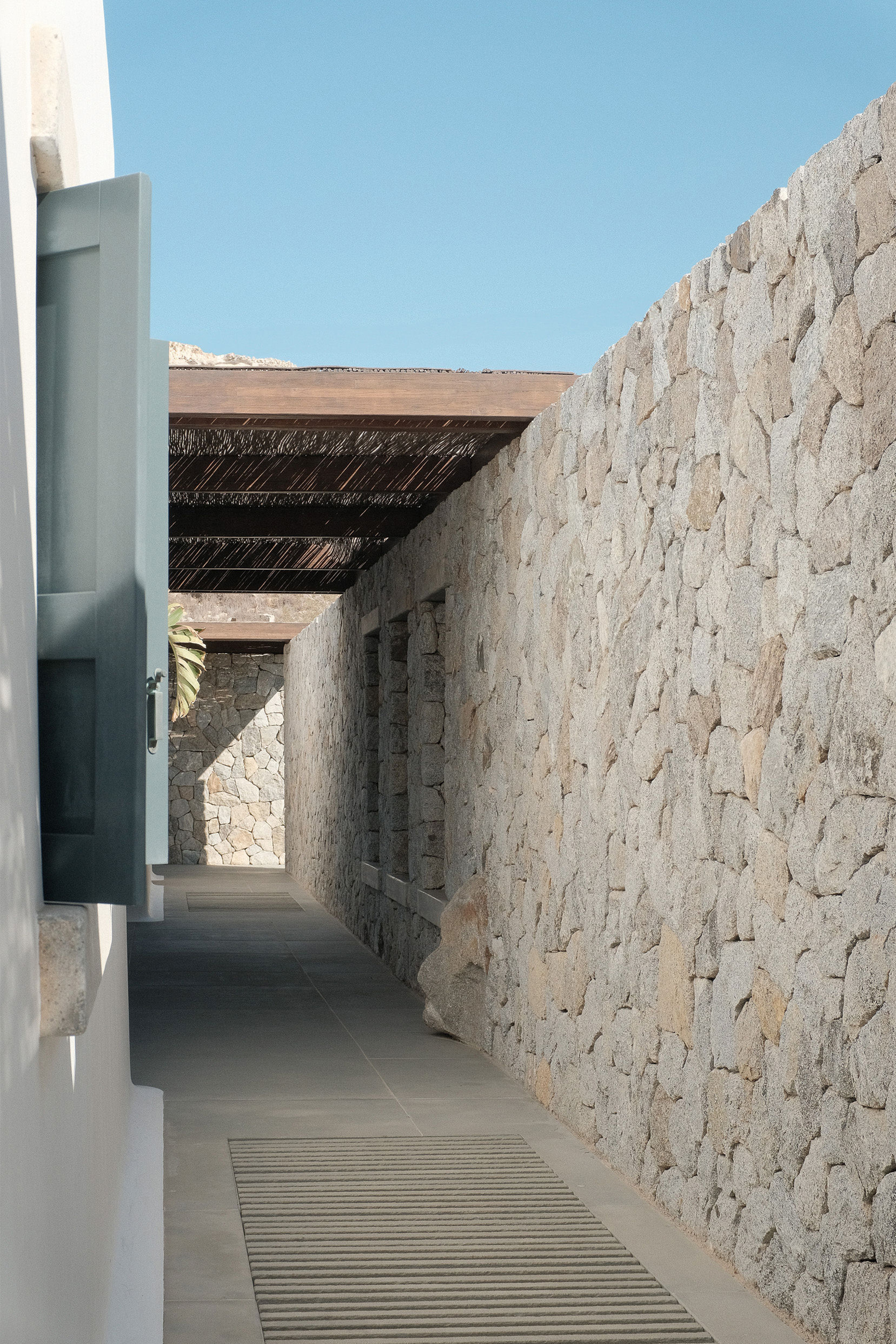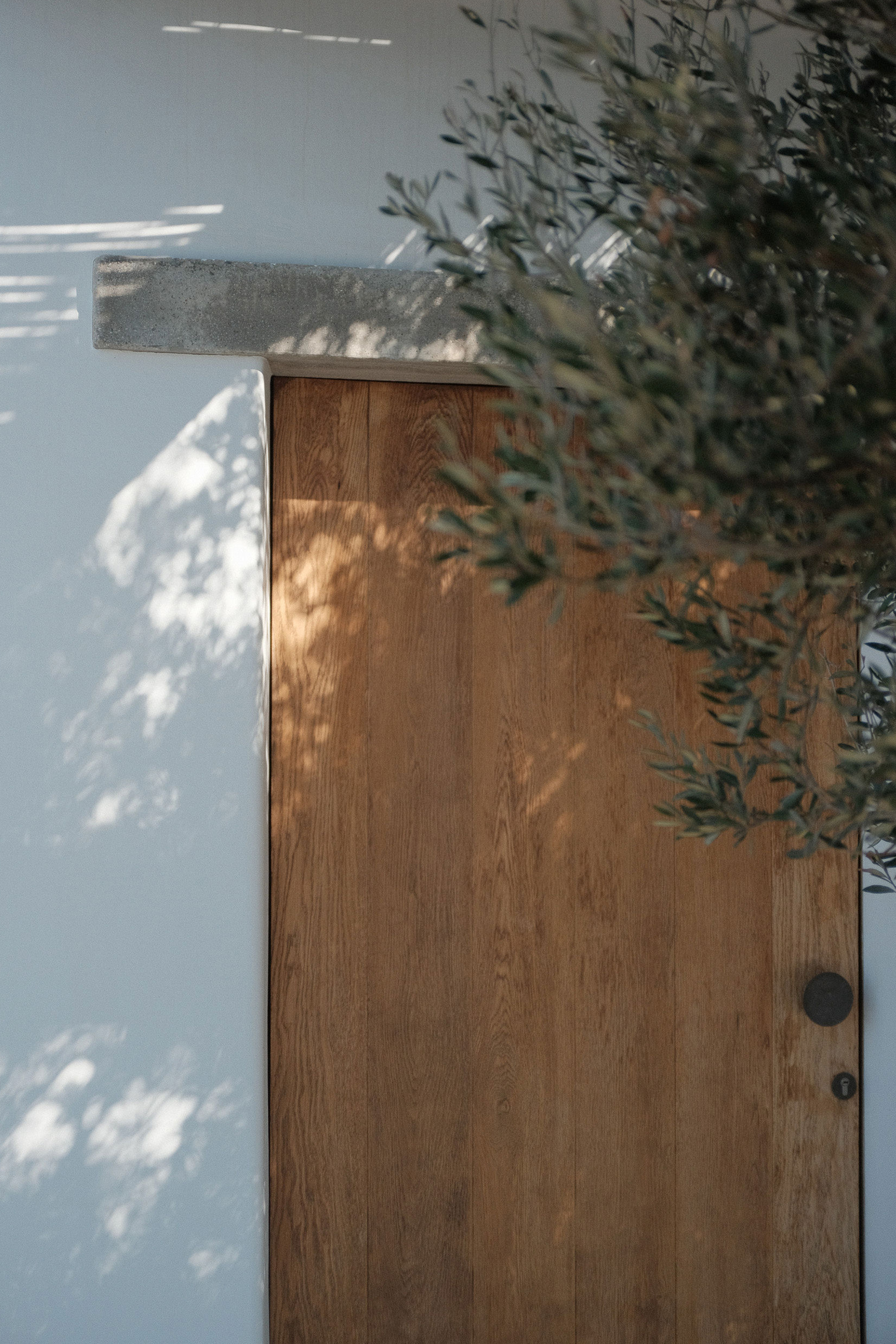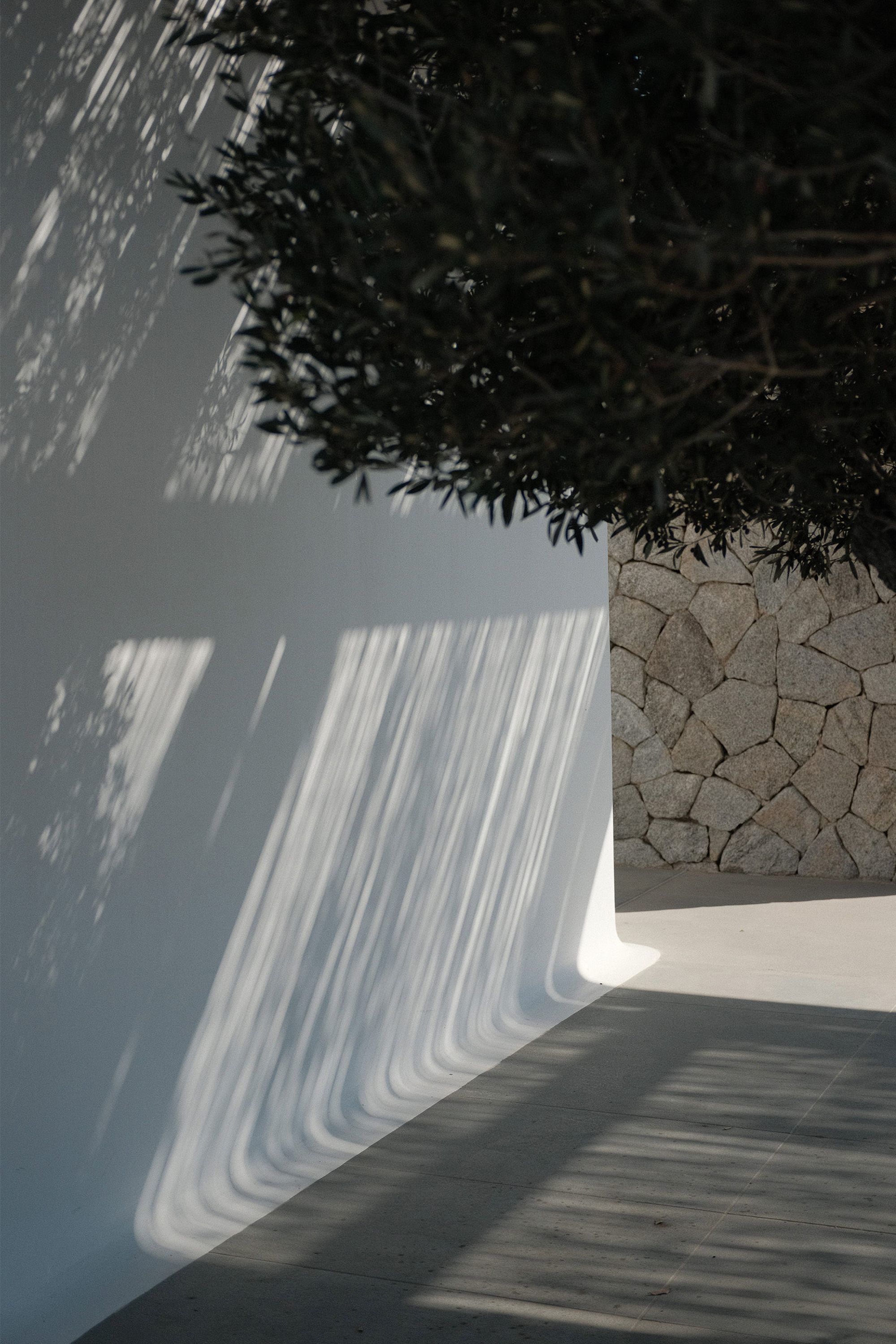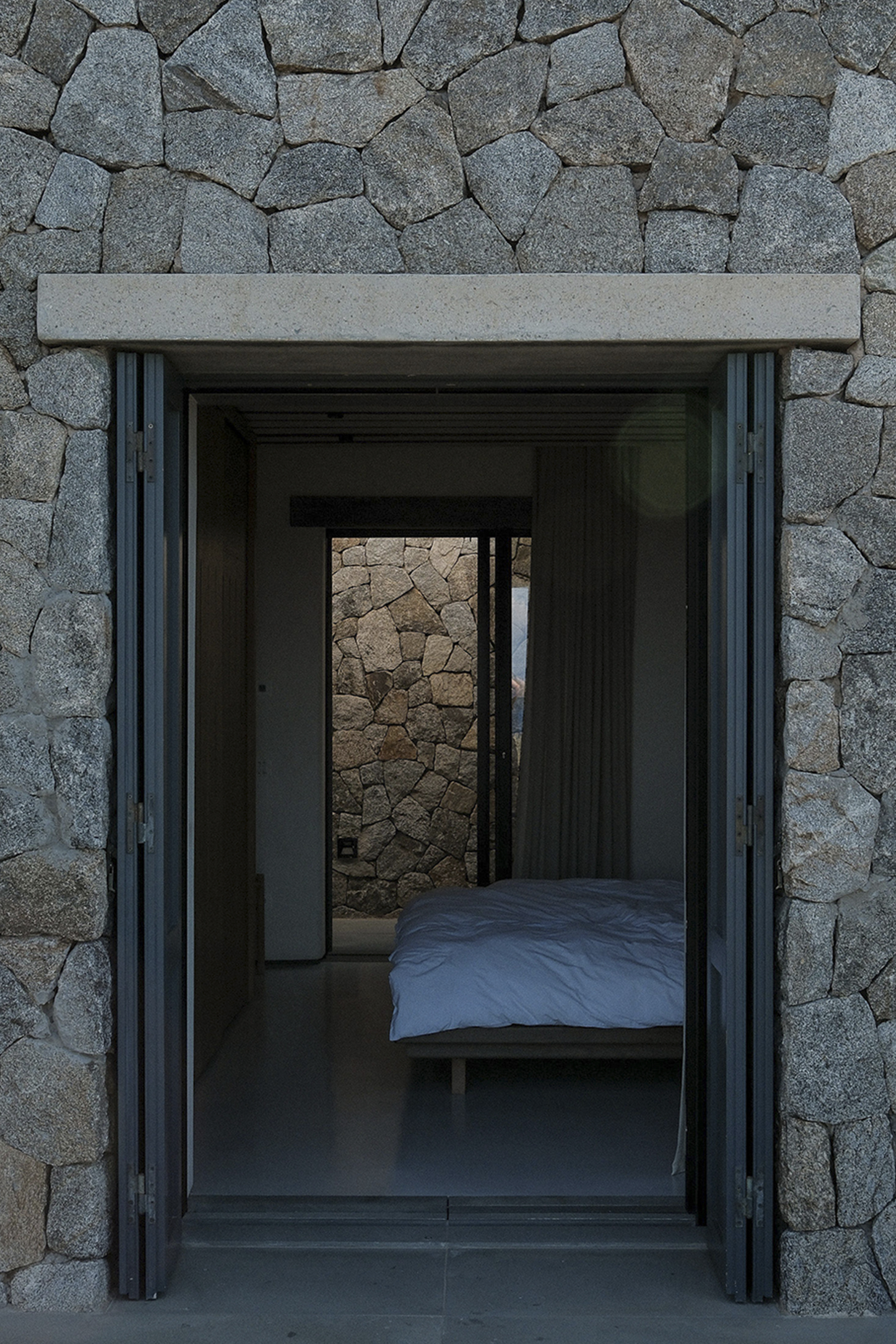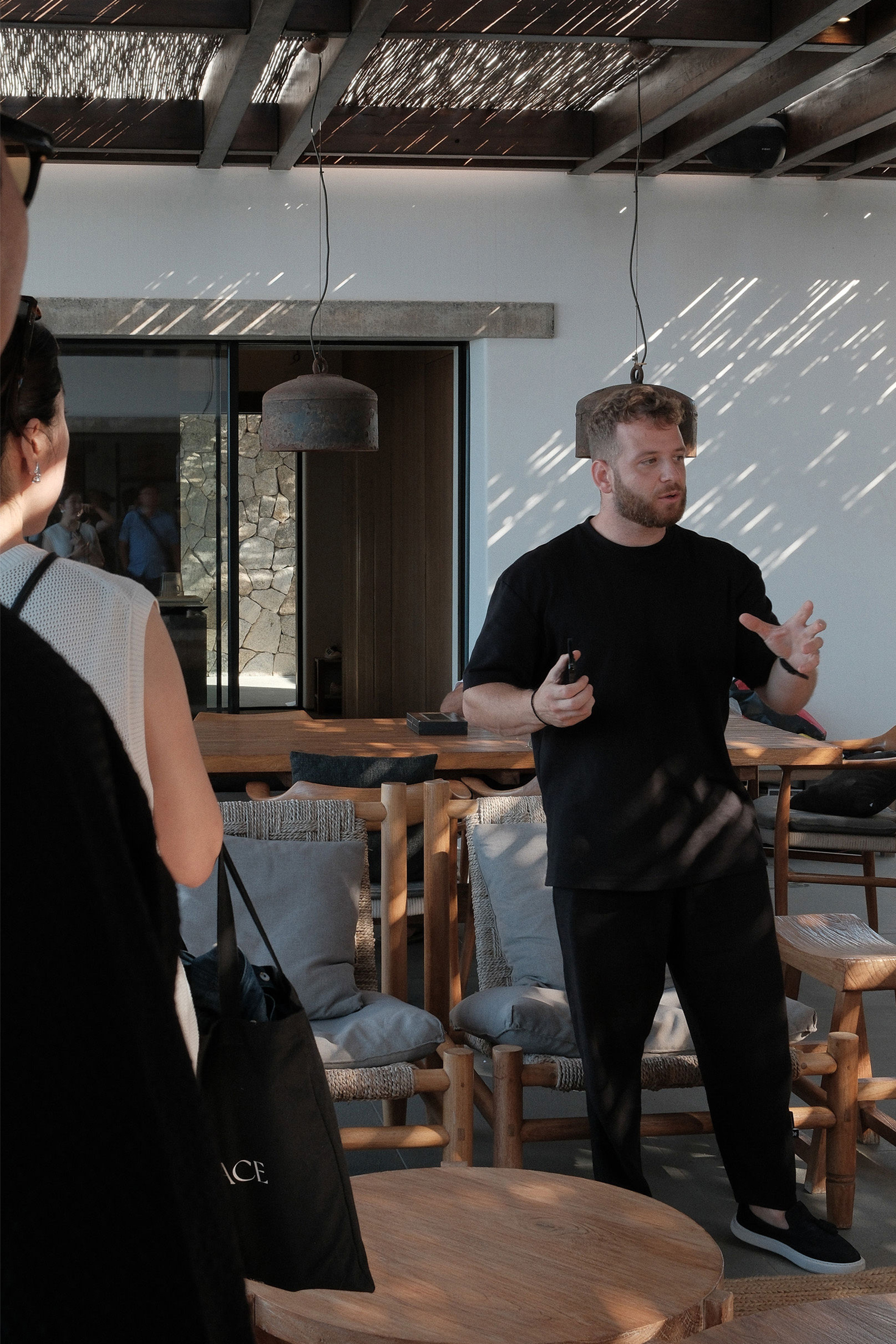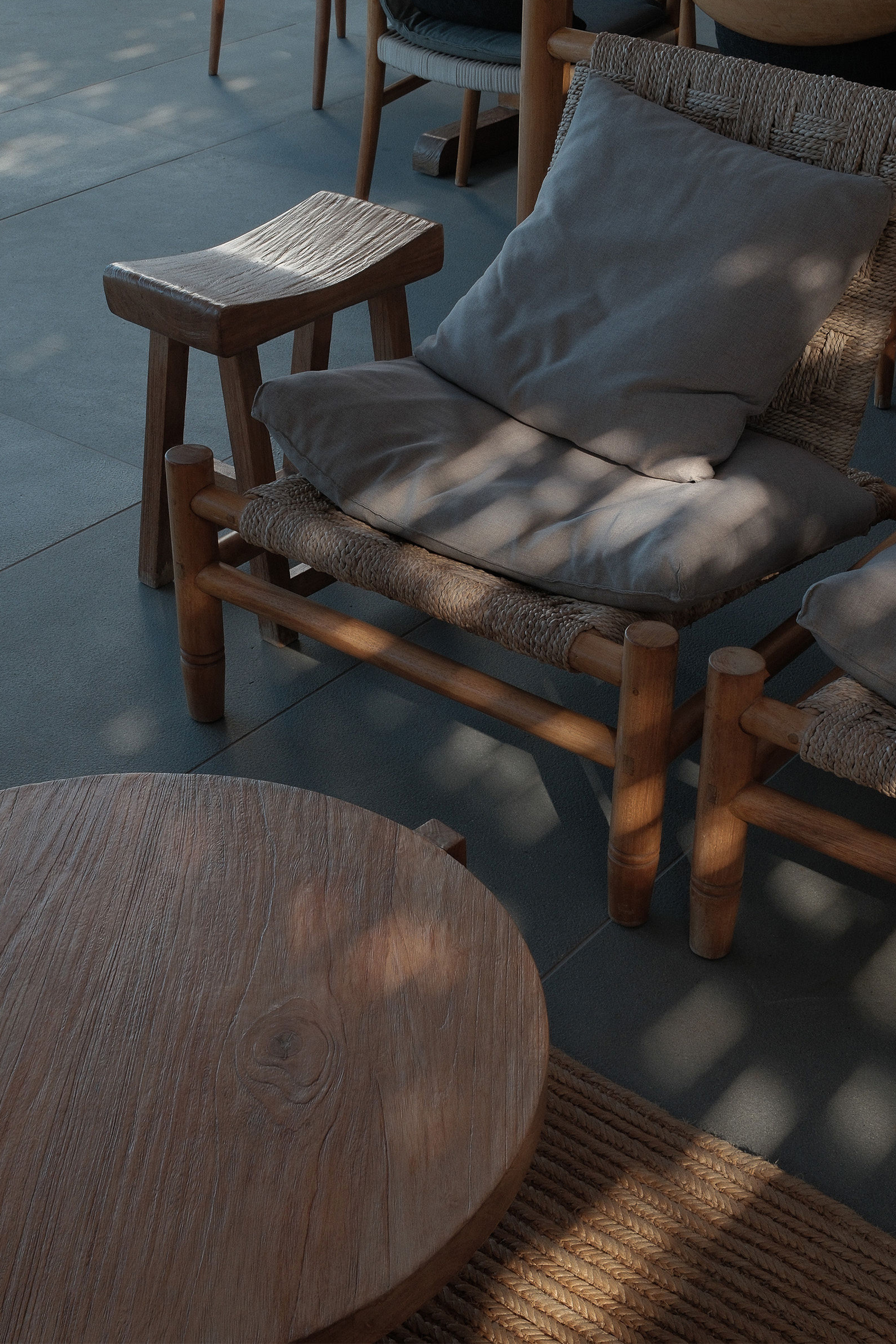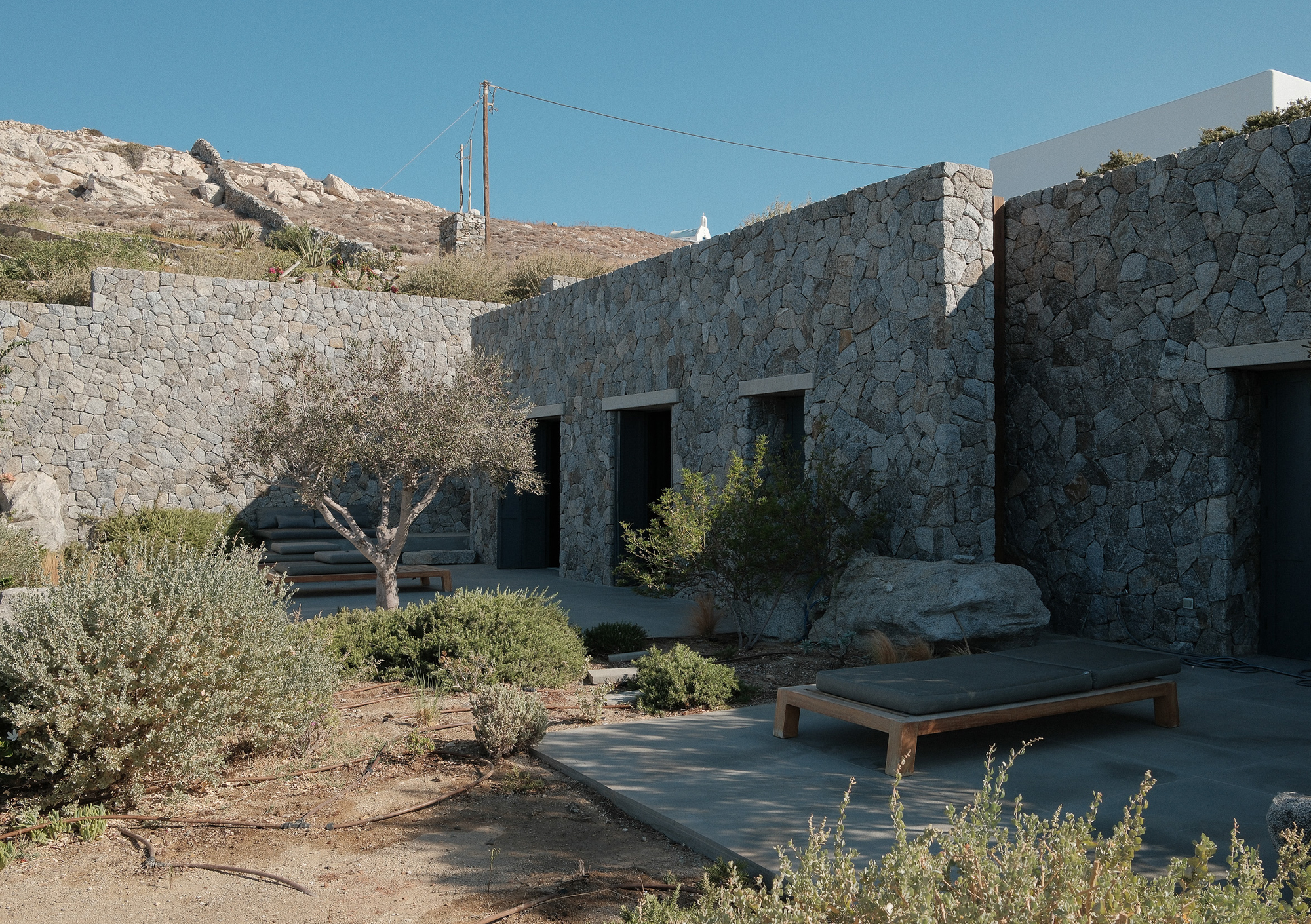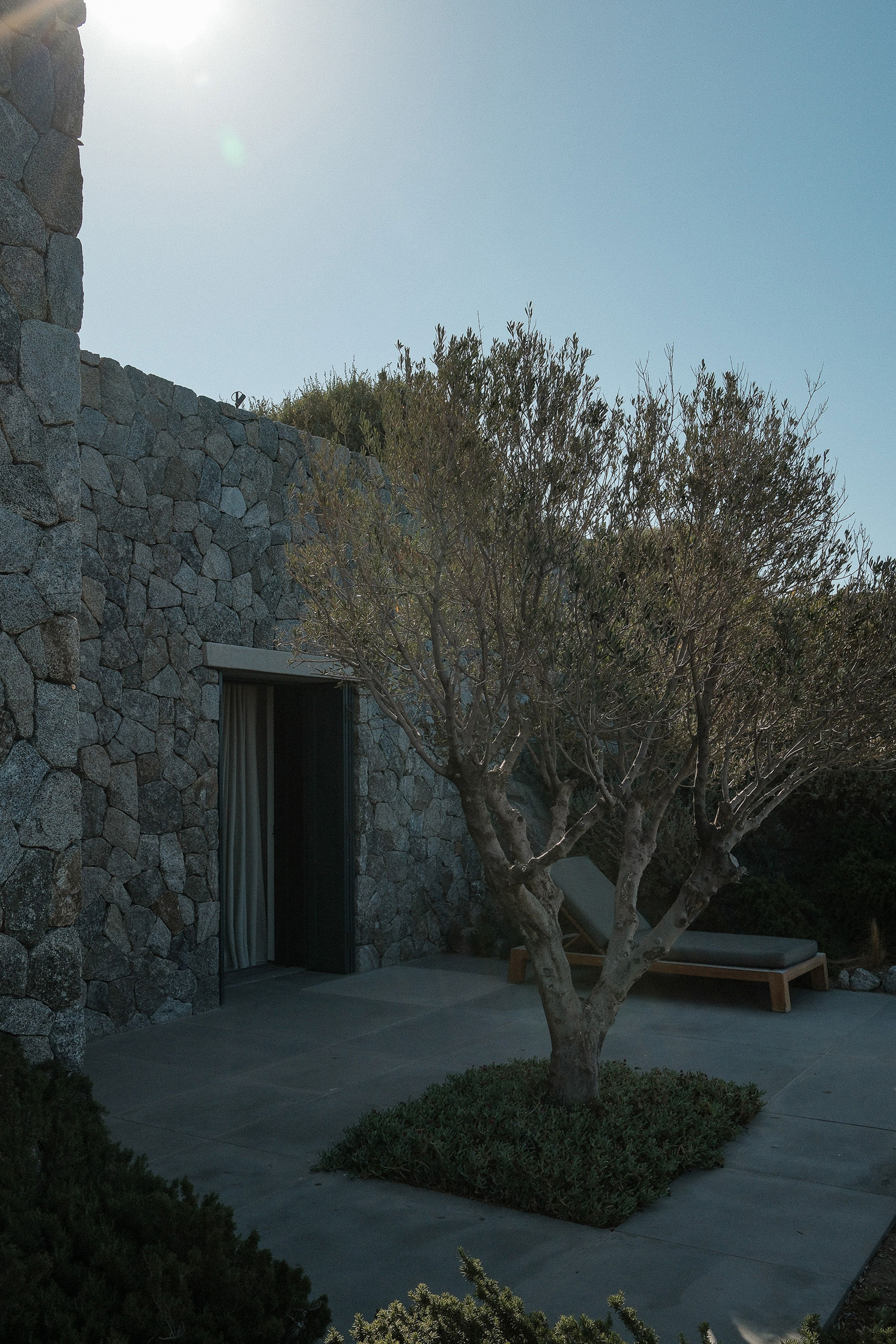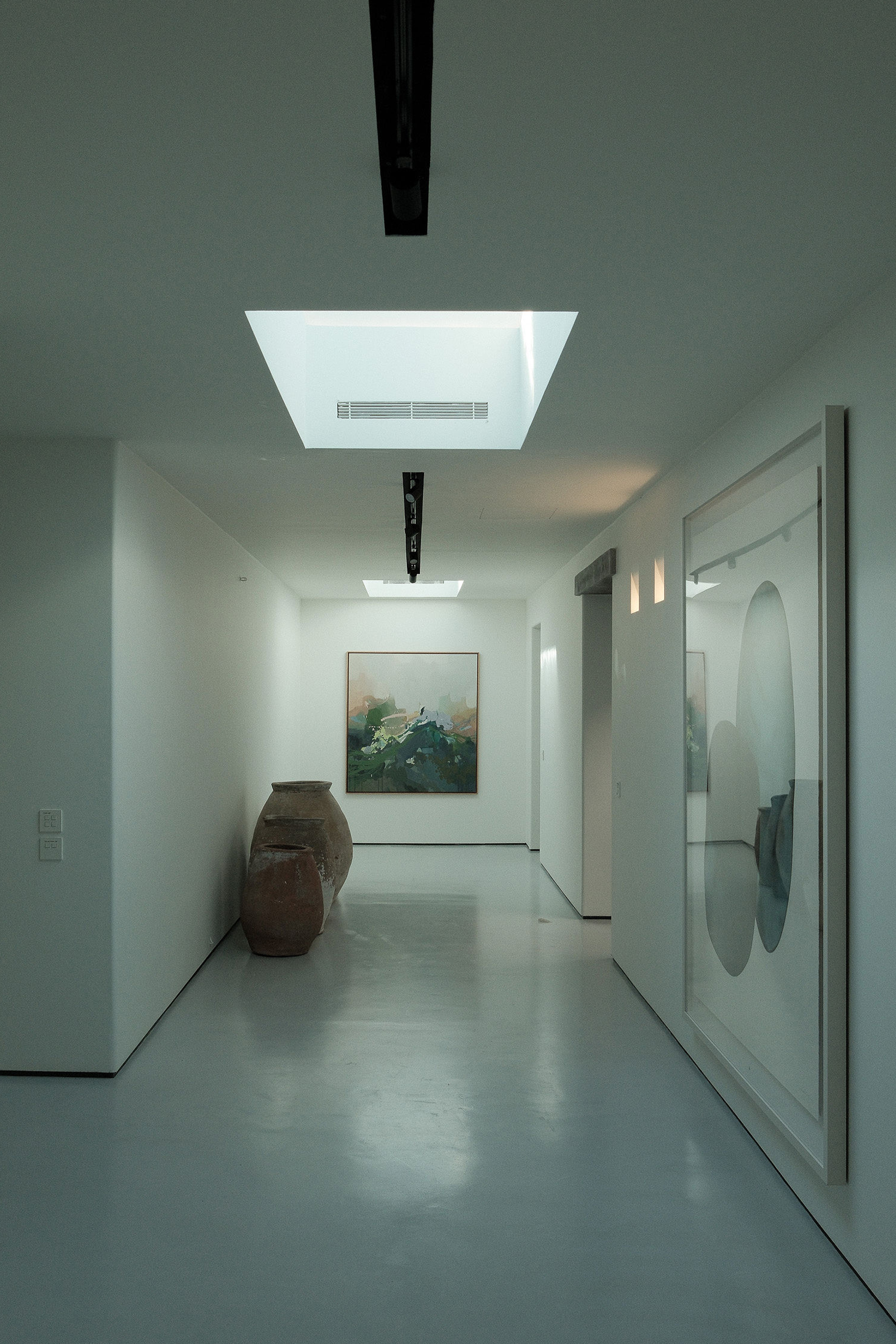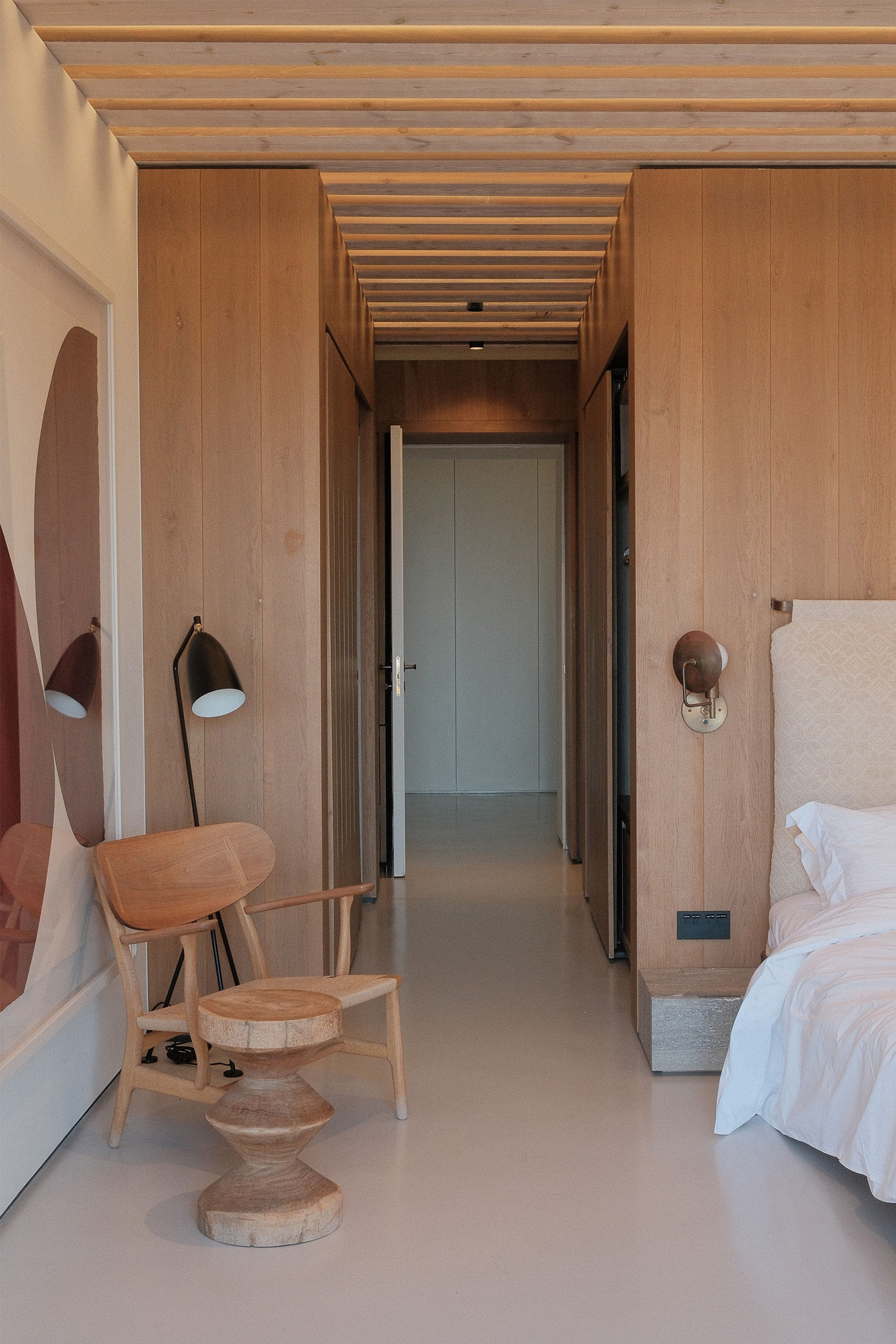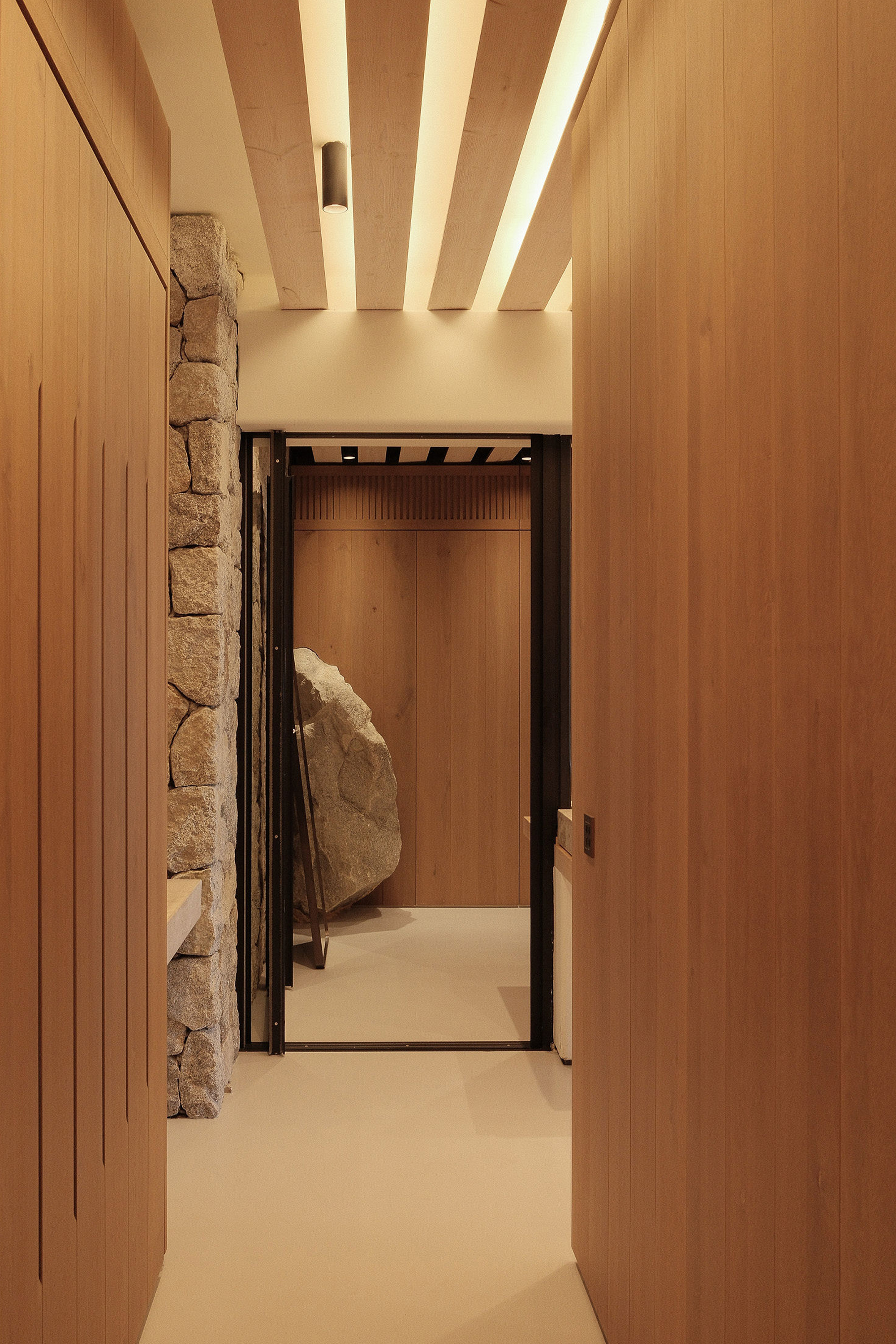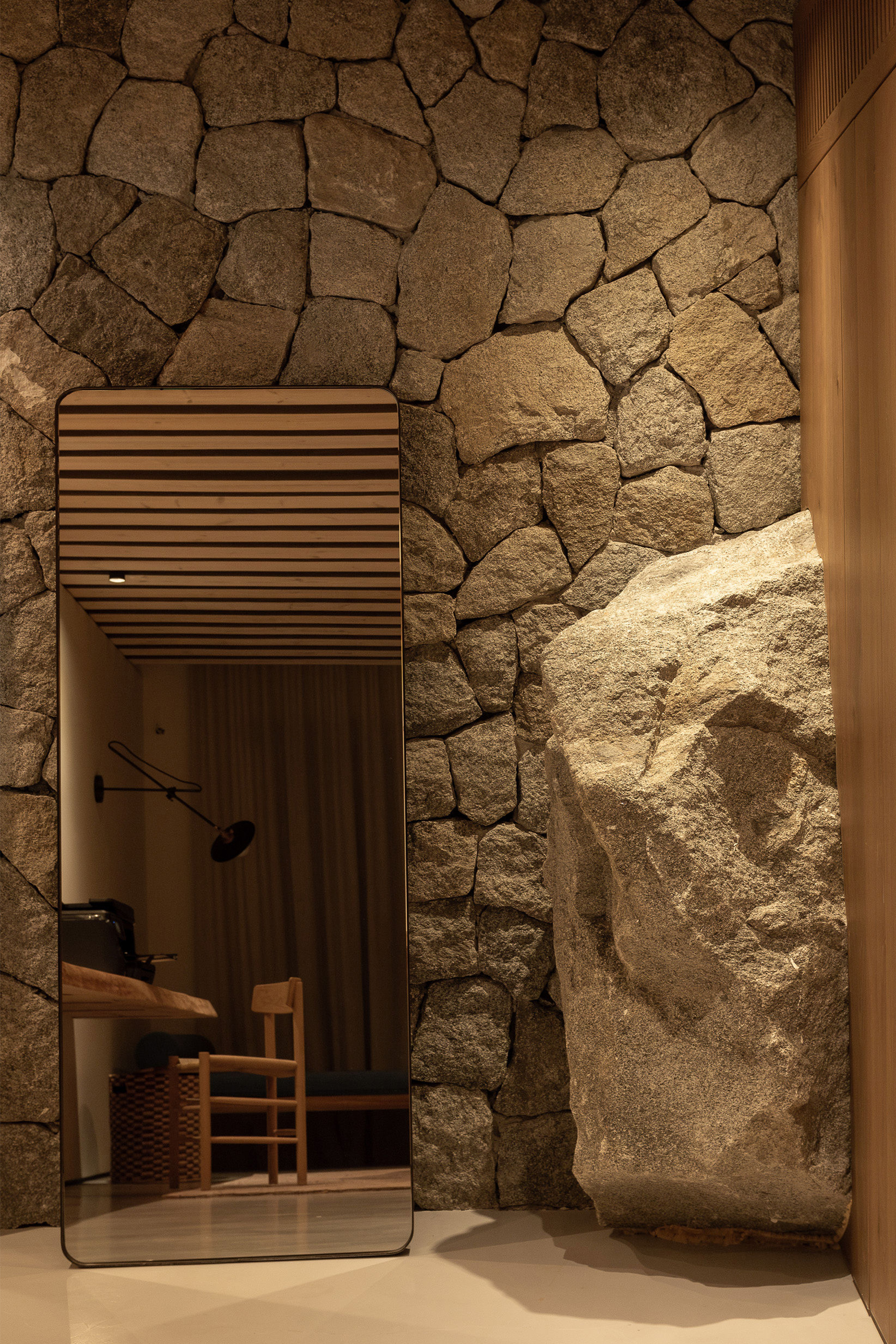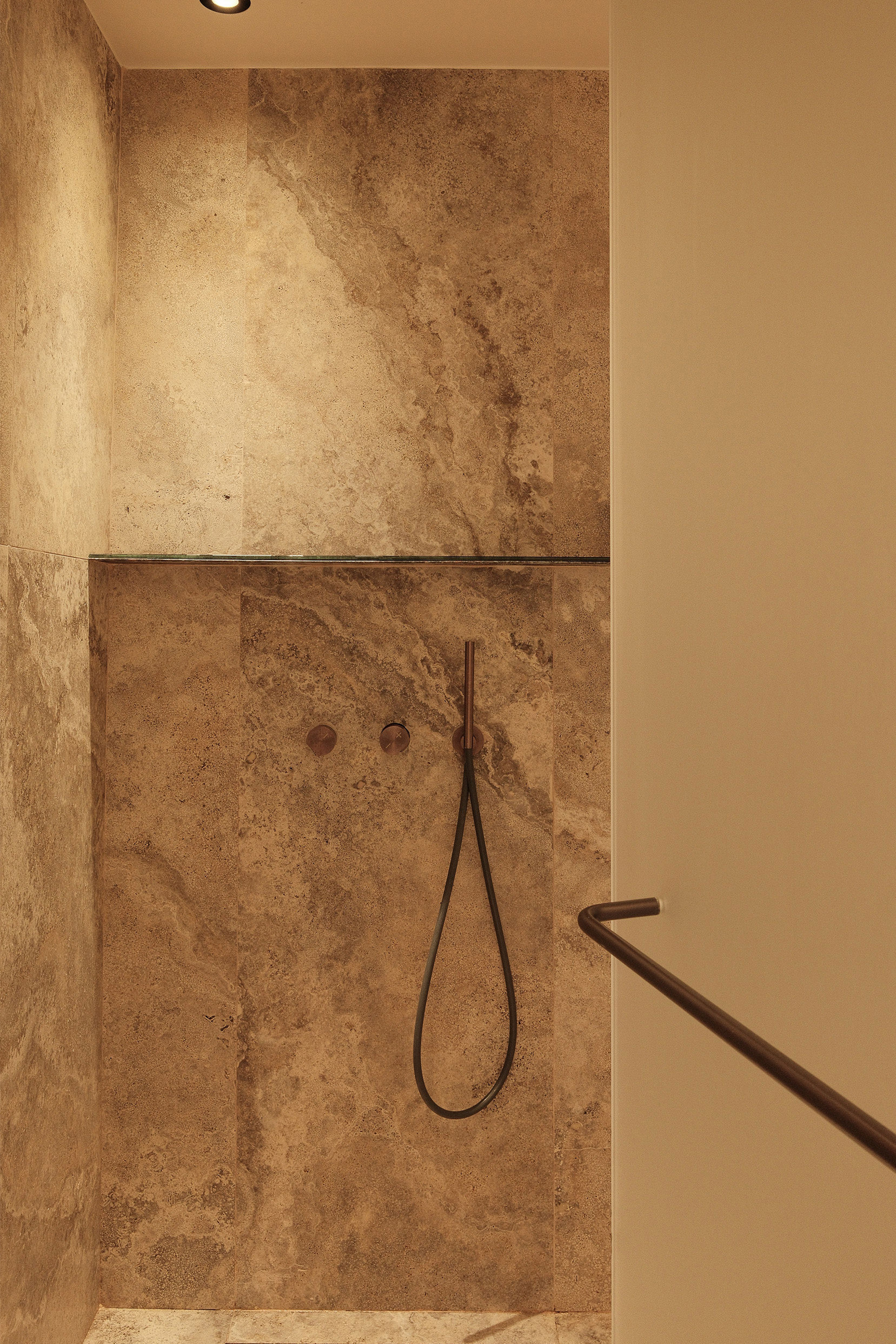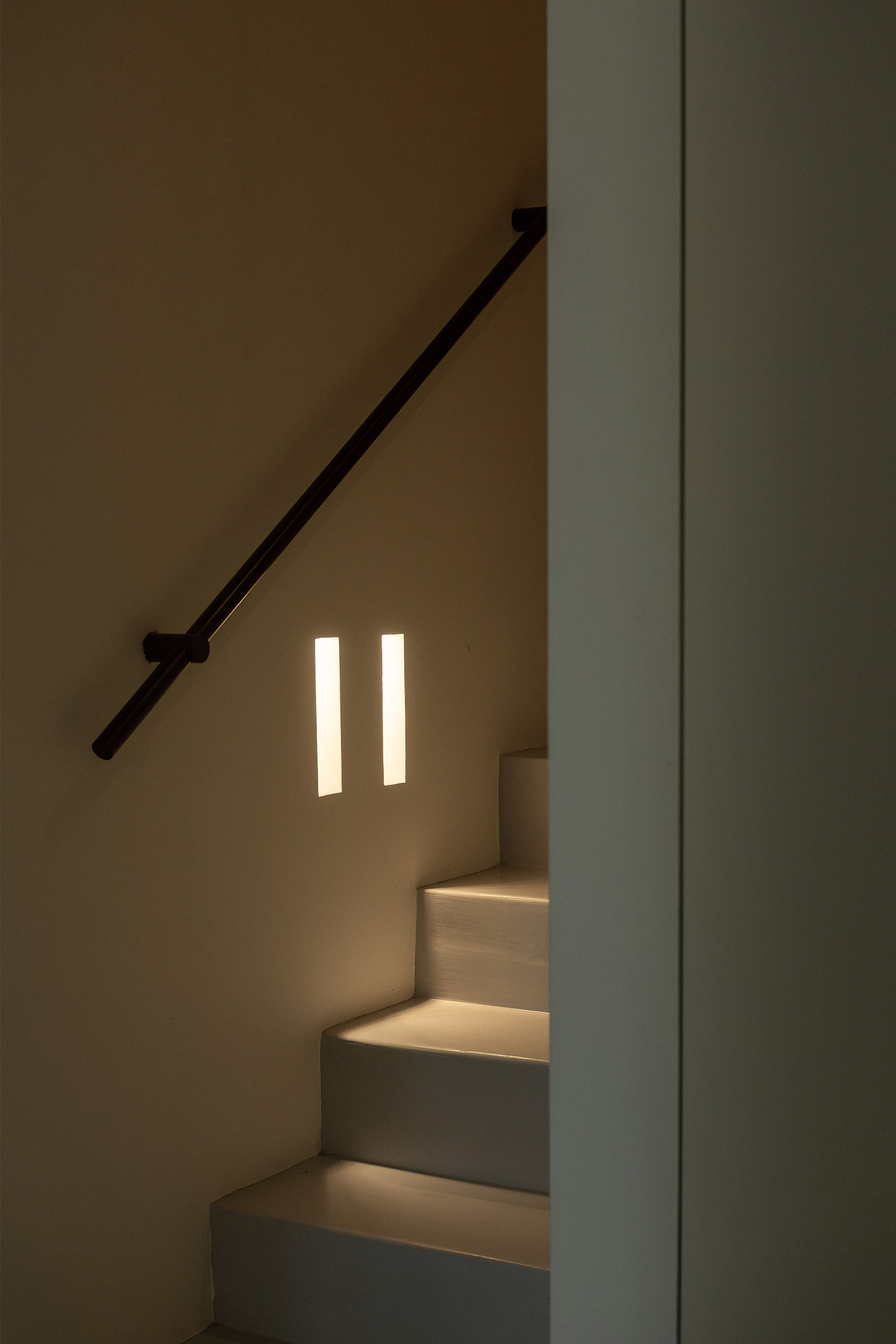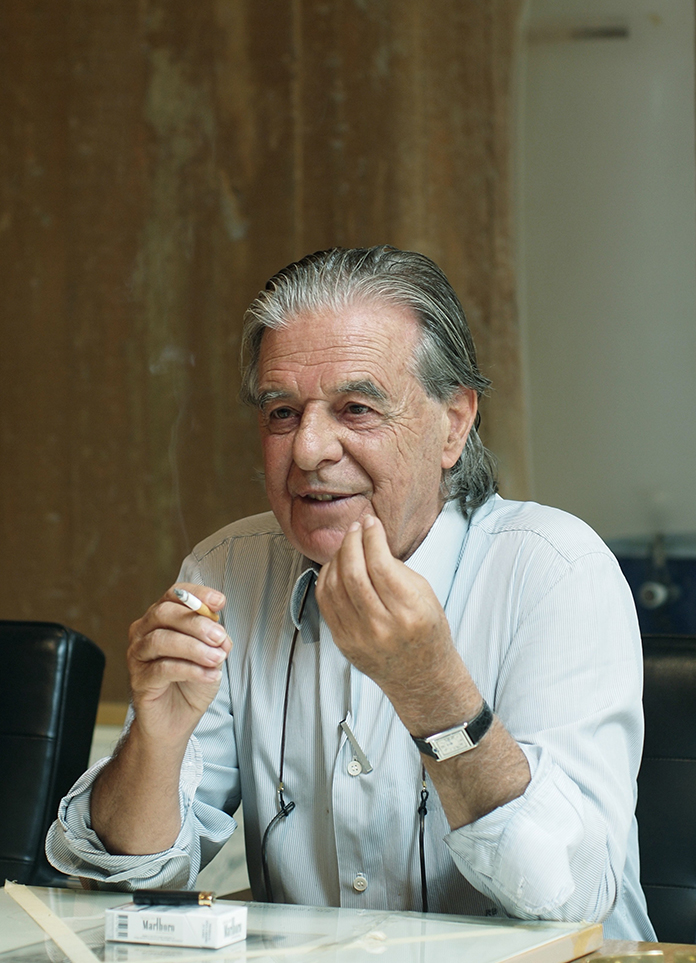When the Aegean monsoon sweeps over the Aleomandra ridge, Villa Mandra, like an unfinished poem, humbly blends into the texture of Mykonos Island. This six-bedroom villa, sculpted by rocks and light and shadow, is not an abrupt architectural declaration but the most elegant interpretation of the Mediterranean soul - it gives way to the scenery yet gently embraces the sunset of Delos, the blues of the Aegean Sea, and the rhythm of the entire Greek summer.
We visited this villa on a quiet early morning. The rough volcanic rocks spread out a geological epic at the entrance, and each mottled pattern tells the thousand-year-old memory of the island. The Karampatakis brothers and their numerous team of K-STUDIO, with the acumen of modern architects, respect and continue these ancient material grammars. They have transformed the stone walls from mere boundaries into a medium connecting the earth and the sky. Those seemingly random builds are actually precisely calculated frames for viewing. When sunlight penetrates the stone crevices at a specific Angle, the entire entrance hall turns into an installation art piece interwoven with light and shadow.
Two pure white volumes lie on the ridge like calm sculptures, and their simple geometric lines form a delicate tension with the jagged rocks. This architectural language is not a simple replication of minimalism, but a poetic translation of the traditional Greek "cave house". When the shadow of the chestnut pergola casts precise diamond-shaped light spots at noon, and when the branches and leaves of the olive tree sway on the lime wall to create a Byzantinian-style gold foil effect, we suddenly understand what it means to "capture light with stones".
